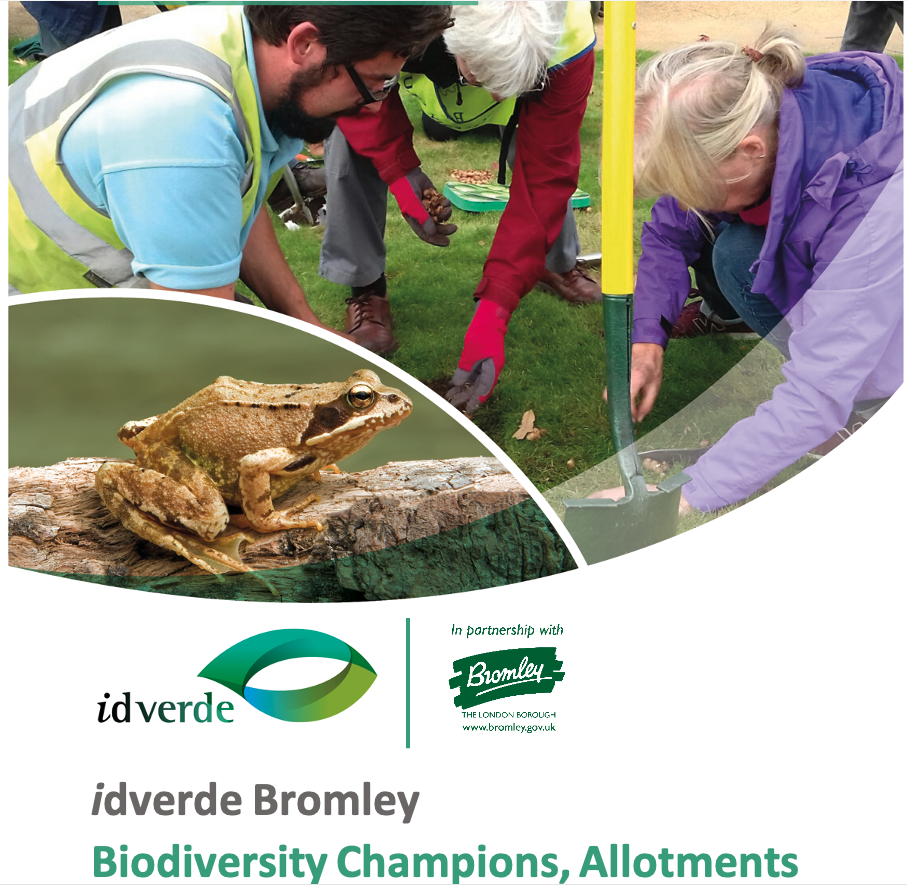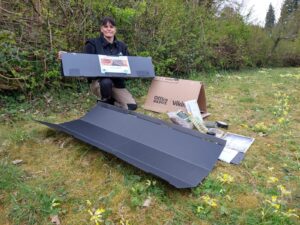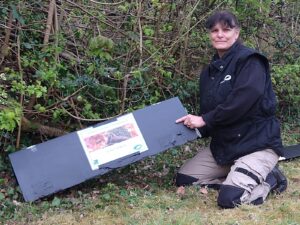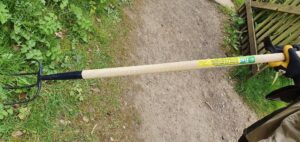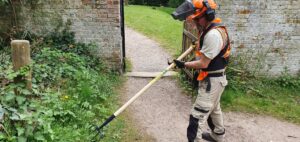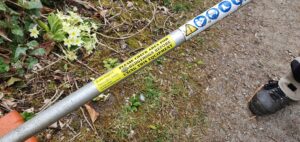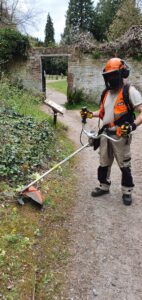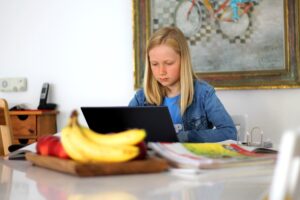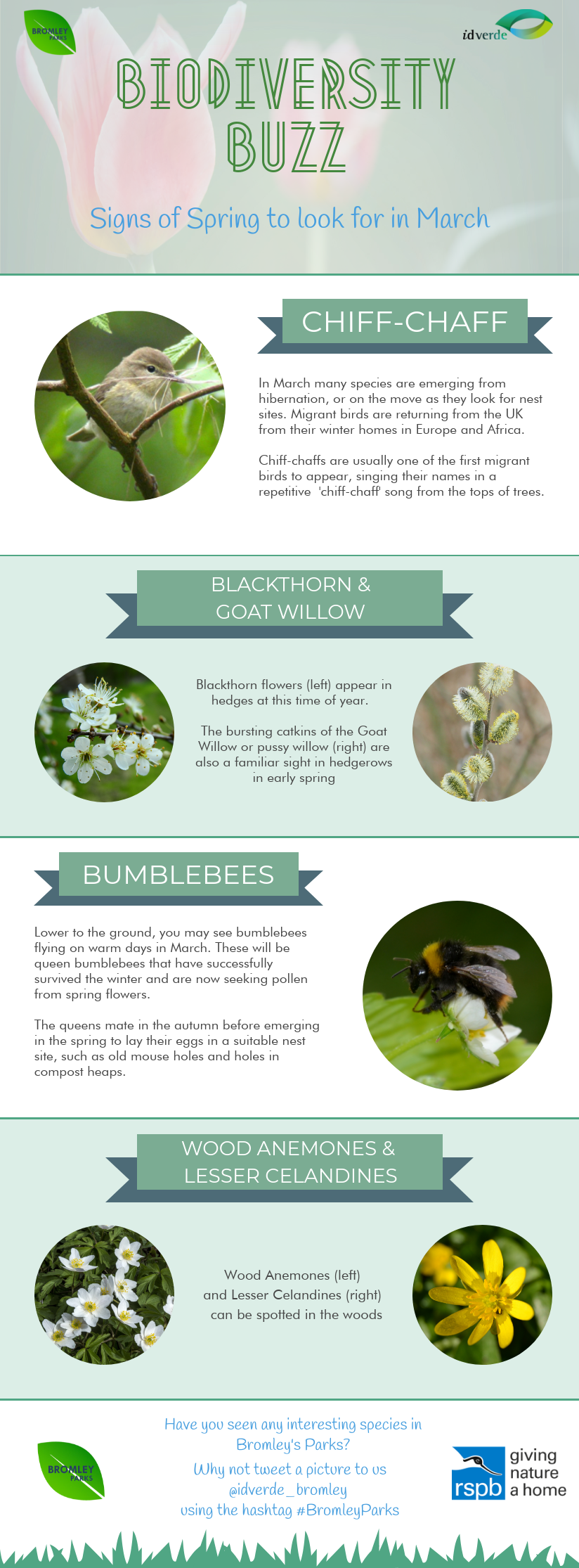OUR ENVIRONMENT IN BROMLEY
Our green environment in Bromley is an important asset, and we need to actively engage in its conservation to protect and improve it for future generations. idverde works closely with the local community, Bromley Council and the RSPB to ensure the future of Bromley’s varied biodiversity. Together, we work to increase awareness of environmental issues, undertake policy development and carry out detailed scientific research to ensure that Bromley’s environment is prioritised and protected.
Our latest partnership with the RSPB provides Bromley with a dedicated Biodiversity Advisor – Steven Lofting – who can be seen working in Bromley’s parks and green spaces.
We always advise you venture into woodlands and beyond to prepare for the unexpected. The tick awareness toolkit gives information on ticks and Lyme disease and how to raise awareness of ticks and tick-borne diseases in your local area. The tick surveillance scheme guidance explains how to take part in PHE’s tick surveillance scheme and the recording form is for capturing details of your tick encounter to share with PHE. Click here for more details.
Read our ‘Biodiversity Buzz’ and other news to find out more about how we are helping to improve biodiversity through our conservation activities, as well as other local work.
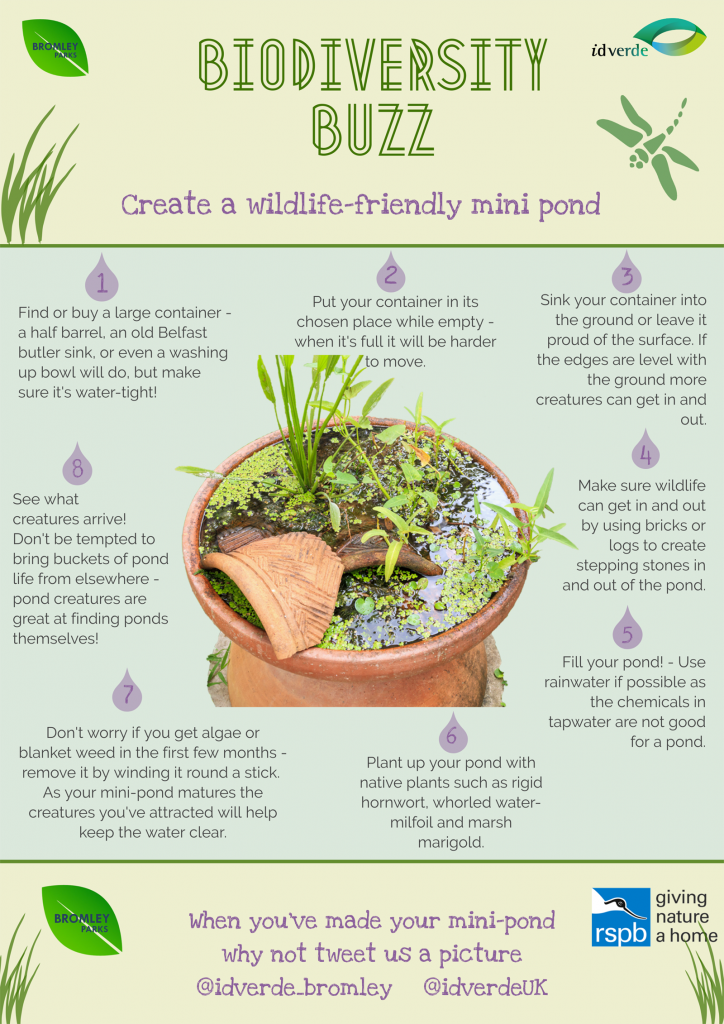
Biodiversity Buzz & other stories in our parks
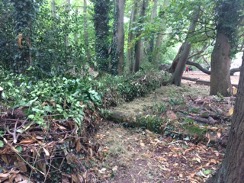

13th December 2021
A large part of woodland management involves the periodic cutting of scrub, coppicing and small tree felling. These activities produce a lot of material, and quite often the most expedient way to dispose of this material in the past has been to burn it. However, bonfires can be unsightly, unpleasant for the public and contribute to emissions and leaving cut material in situ is often not an option.
Over the past few years, the Countryside team have worked to reduce the number of bonfires by constructing ‘dead hedges’ by staking cut material into a linear pile. As well as reducing the need for bonfires, dead hedges have both ecological and site management advantages. The hedges can be used as features which guide the public through the woods or stop sensitive areas room being trampled. They can be put around ponds to stop encroachment by dogs or around the drip-line of veteran trees to reduce compaction from footfall. They can also be used to define areas within the wood, dividing an area of coppice into coupes for example.
Dead hedges also have significant ecological advantages. Rather than allowing nutrients from cut material to leach back into the soil potential impacting ground flora, this is localised to one area and not across a whole woodland glade. The hedges also provide habitat and refugia for small mammals, amphibians, reptiles and invertebrates.
There will still be circumstances where burning of material remains the only option (removal of invasive species for example), but over 1km of dead hedge has been produced on Scadbury Park alone over the past three years.
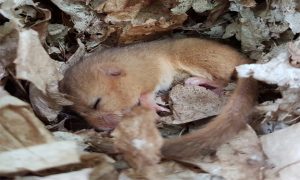
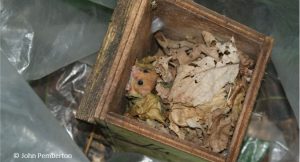
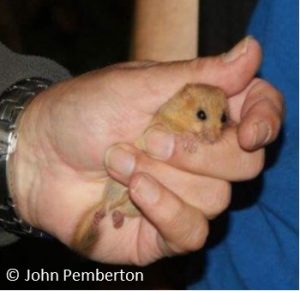
14th September 2021
Hazel Dormice (Muscardinus avellanarius) are one of the cutest but rarest mammals in London; Bromley and Croydon are the only London boroughs with dormice colonies! Bromley has four sites which are Farnborough, Downe , Cudham and Biggin Hill that are all monitored as part of the National Dormouse Monitoring Scheme.
On a monthly basis from March through to November, licenced volunteer dormice handlers work with idverde and RSPB staff to undertake surveys of boxes to check for dormice and their nests. All nests and individuals are recorded along with any other mammals found along the way; such as mice, voles and shrews that will also use dormice boxes as will some birds.
Wider surveys are also carried out using dormice tubes to find new areas in which dormice are present. They have previously been found in tubes at several sites in the Downe and Cudham Valley’s. The hope is that new areas of connecting habitat can be explored to identify new habitat corridors which are crucial to population growth.
Dormice live in a broadleaved woodland habitat, nesting in hollow trees, brambles or coppice stools. They are arboreal and rarely venture to the ground. They require large woodland and hedgerows suitable to support a viable population. With a diverse woodland structure and a range of food plants typically found in semi-natural ancient woodland where dormice can thrive despite being rarely seen.
idverde’s Habitat Management and Survey work is important as dormice in Bromley are threatened by loss and habitat fragmentation. Inappropriate woodland management such as a decline in coppicing, intensive management or livestock incursion into woodland are detrimental to their populations. Loss of hedgerows and other linear features, such as tree lines remove essential links between small isolated woodland habitats. Monitoring of Bromley’s populations is an important element of the Bromley Biodiversity Action Plan being delivered by idverde in partnership with the RSPB.
Dormice are protected under Schedule 5 of the Wildlife and Countryside Act (1981) and Schedule 2 of the Conservation Regulations (1994) (Regulation 38), and Schedule 12 of the Countryside and Rights of Way Act (2000). It is an offence to intentionally or recklessly possess, injure, kill, obstruct or disturb the species’ breeding site or resting place.
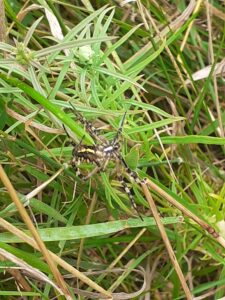
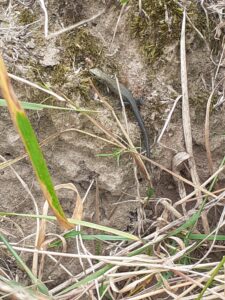
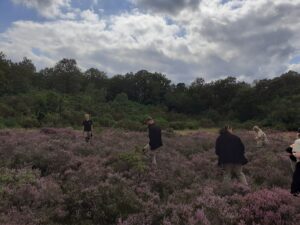
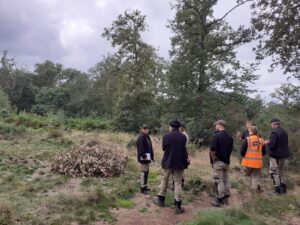
23rd August 2021
London Borough of Bromley is home to four of the UK’s native reptile species; adder, grass snake, slow worm and viviparous lizard. All of these species are legally protected under the Wildlife & Countryside Act (1981). idverde have managed London Borough of Bromley’s parks including nature reserves since 2015, this includes nationally rare and declining habitats such as heathland and species rich grasslands which are important habitats for reptiles, particularly the adder which is only present on 4 sites across London including one in Bromley.
Managing habitats for specific species is a challenging and at times controversial approach as focussing management on specific species can be of detriment to others. As such a landscape, site or habitat level approach is normally adopted in Bromley. Lowland heathland is an important habitat for reptiles and has suffered national declines of around 85% over the last 150 years. As such idverde Bromley recently worked with Kent Reptile & Amphibian Group (KRAG) & RSPB to provide training to our ranger team and also to provide feedback on the progress of our habitat management on some sites with known reptile populations.
A morning of theoretical training was delivered by KRAG followed by an afternoon of site visits as well as a consultation report provided by RSPB. It was important to us that we receive an independent assessment of our work to ensure that we are working rigorously and making management decisions based upon evidence.
The number of reptiles sighted on the day was hugely encouraging and indicative of a regionally important population of adder which our monitoring suggests is growing. This was hugely encouraging as adders are arguably the British reptile in steepest decline nationally and predictions for their future in the south of England are bleak, so to see that our habitat management is benefiting the species to such a degree resulted in a very happy team.
Recommendations on future heathland management have been received and idverde will consider them in future management. These include a significant reduction in gorse cover on heathland sites to allow heather to expand and potentially thinning of tree cover to further increase heathland areas. This would benefit biodiversity more widely on site while also increase the likelihood of linking up with other neighbouring sites, thus potentially allowing populations to grow and be more resilient to future conservation challenges.
This example of collaborative working and our continued work to improve biodiversity in Bromley for the benefit of nature and people.
Our habitat management is a critical element of achieving the idverde Bromley Biodiversity Action Plan and is supported by our partnership with the RSPB.
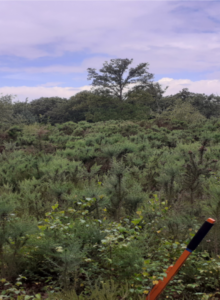
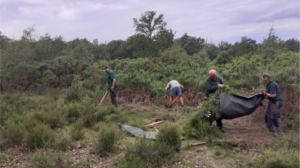
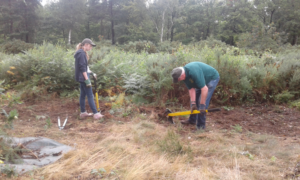
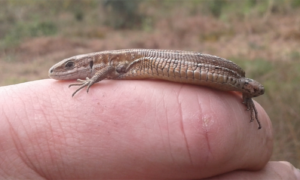
23rd July 2021
Lowland Heath or heathland, over the last two hundred years has become an increasingly rare habitat. In fact, in that time, approximately 98% has disappeared, due to changes in management, including cessation of grazing, building developments and general neglect. A large amount of land, formerly Lowland Heath is now secondary woodland, which is a very common habitat throughout the United Kingdom. The London Borough of Bromley has a significant proportion of heathland which is left within the boundary of Greater London.
Many species of wildlife, from plants and insects through to various species of birds and reptiles can only exist in the heathland habitat and as well as the habitat these species have become more and more rare.
A significant area of land at Keston and Hayes Common is designated as Site of Special Scientific Interest, which means that the landowner has special responsibilities to ensure the halt of decline of the habitat and where possible to carry out habitat restoration.
Keston and Hayes Common is part of a Countryside Stewardship agreement with the Department for Environment, Food & Rural Affairs and Natural England. We, on behalf of the Council are bound by the agreement to carry out certain works over the next ten years to maintain and enhance the heathland habitats there.
Idverde, as a matter of course, uses alternatives to herbicides and some of the plants that need to be controlled are not easily treated by herbicides that are available to us. Gorse especially has come to dominate large areas of heathland within the sites, and below you will see the solution, which so far has been very successful.
Volunteers, armed with ‘tree poppers’ and muscle power, have helped idverde staff the begin clearing areas where gorse especially has become over dominant and shades plants such as heather out. The advantage of using tree poppers is the creation of bare ground, which as well as an important component of heathland, creates areas where new heather can germinate and become established.
The habitat management and restoration that has been carried out ensures that the Sites of Special Scientific Interest remain in ‘Favourable Condition’ and Natural England carries out regular inspections to ensure that this is the case. Sites of Special Scientific Interest are covered by the Wildlife and Countryside Act (1981) as amended.
Many of the volunteers that we work with are specialists and regularly report the presence of species that have not been recorded for many years following our habitat restoration work.
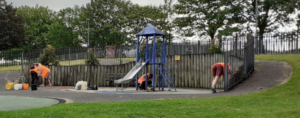

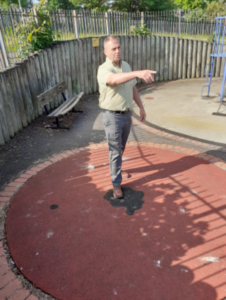


20th July 2021
The Sun came out and a rainbow emerged in the Playground at Tillingbourne Green. Poverest Primary school contacted idverde to ask if they could include the playground in a school project to enhance the local community. After a productive meeting on site with idverde’s Community Manager and Parks Development Manager, as well as the Chairman of the Cray Forum Poversest Primary school’s Vice Principle loved the idea of a colourful mural that the children could design and paint. Local children taking ownership of a playground can improve community cohesion and give a great sense of pride.
In preparation for the day volunteers from The Cray Forum joined idverde to ready the wall for the children to paint it the mural. The day arrived and the sun came out. Poverest Primary School rose to the occasion. Over 20 children and their families worked for over 3 hours to create a bright and colourful mural that can be seen from all around Tillingbourne Green. The school will add flowers and bugs in the next school term to mural. A great job by all involved.
A massive thank you to Crown Paints for the discount and speedy service. Thanks also to Councillor Ellis and Councillor Hitchins for organising funding so quickly from Biggin Hill Airport. This was an example of the community working together at its best.
1st May 2021
In April 2021 we are delighted to launch the idverde Bromley Biodiverse Allotments programme.
The aim of this programme is:
- Provide biodiversity training to Bromley allotment holders
- Support individual allotment holders to become a “Biodiversity Champion” for their allotment
- Collate species data from Bromley’s allotments
What does the programme entail?
The programme will consist of 3 elements:
- Annual biodiversity training aimed specifically at allotments & allotment holders
- Volunteer Biodiversity Champions for allotments
- Citizen science surveys
Biodiversity Training
idverde has committed to delivering annual biodiversity training to BALGL allotment holders for the next 5 years (2021-2026). This training will initially focus on promoting biodiversity friendly practices on allotments, key species and how to improve allotments for biodiversity. Due to Covid-19 this training will initially be online in 2021. Over the duration of the programme it is anticipated that this training will develop as participants become more biodiversity aware but will always welcome new participants each year.
Out first training session took on 29th April 2021 and online via Zoom. Participation in this course was excellent with 40 participants. idverde Bromley Conservation & Education manager delivered the initial training;
“It was fantastic to see the enthusiasm for the initial training and for biodiversity generally. We sometimes see online delivery as a plan B due to Covid restrictions but delivering online has allowed us to reach more than double the number of people who would have been able to fit in our classroom pre-Covid. Allotments are a hugely important land use for biodiversity and allotment holders tend to be a passionate group of people which was clearly evident in the training event. I can’t wait for the next one”
Biodiversity Champions
Upon completion of the training we will seek enthusiastic volunteers who wish to take on the challenge of becoming a “Biodiversity Champion” for their allotment. This voluntary role will be flexible and work around individuals, their interests and the time they have to dedicate to it. The key responsibilities of the “Biodiversity Champion” are:
- First and foremost to be an advocate for biodiversity on your allotment. Promote good practice and encourage others to do the same
- Support idverde in collating species citizen science data for your allotment. This will involve setting up a system for allotment holders to record pre agreed species on site and sharing the results with i
- Act as a liaison between your allotment and idverde as well as the allotment committee on biodiversity issues.
Citizen Science Projects
Each year idverde will run at least one project aiming to increase our knowledge of species present on Bromley’s allotments. In 2020 this will consist of two projects:
- Hedgehogs on Allotments- Using hedgehog tunnels to survey for the presence of hedgehogs on a sub set of BALGL allotments. Separate training will be provided for this project.
- Allotment Species Sightings- Using either an electronic (via mobile device or home computer) or paper form submit any sightings of a set of specific species likely to be present on Bromley allotments to i
We ask that any records of the following species are submitted. Simply knowing which species are present on which site is important to us.
- Common frog
- Common toad
- Smooth newt
- Palmate newt
- Great crested newt
- Common lizard
- Slow worm
- Grass snake
- Hedgehog
- Greater stag beetle
- Bullfinch
1st May 2021
In 2016 the hedgehog was voted Britain’s favourite mammal in a public vote by the Royal Society of Biology. Unfortunately despite this they are in steep decline. Estimates place the current UK population at around 1 million, down from 30 million in just 70 years ago. The reasons are mixed, habitat loss, roadkill, use of pesticides and lack of connectivity between areas of habitat, particularly gardens all combine to make the hedgehog’s story a troubling one. As the London Borough of Bromley’s contracted grounds maintenance and parks management partner we work regularly with various stakeholders to ensure that habitats are managed well for biodiversity, this includes species surveys. Hedgehogs are however particularly vulnerable to injury from strimmers and brushcutters when hibernating and nesting in undergrowth. As part of our commitment to provide training to all of our operational staff in biodiversity we have also liaised with the British Hedgehog Preservation Society to have all of our strimmers and brushcutters in Bromley branded with hedgehog warning stickers. These stickers will remind our colleagues to check for signs of hedgehogs and other ground dwelling mammals before commencing work.
“We have been delighted at the response to this campaign and thank idverde for getting involved. We hope that it will save many hedgehogs and would encourage gardeners and landlords to help further by ensuring that there is easy access in and out of gardens too – a 13 x 13cm hole at the bottom of boundary fences and walls will create a hedgehog highway that will help hedgehogs get around your neighbourhood.” Fay Vass, Chief Executive, British Hedgehog Preservation Society.
18th February 2021
As we descended into another lockdown on January 4th 2021 where schools shut for the second time, at BEECHE we decided to take our programmes online!
Until now, all public sessions from BEECHE have been delivered face-to-face (with many new covid-secure measures in place), even in Tier 3 restrictions in December 2020. However, being the second time in lockdown, this time we were able to plan in a way that enabled us to deliver sessions online for the first time.
Our audience was mainly school children who are currently unable to be in school due to the lockdown, aged between 7 and 12 years old.
We decided to plan our first sessions as a series of webinars, in the hope that we could provide a continuing learning opportunity for students: Rock around Bromley and The Pond Habitat.
Rock around Bromley was inspired by some of the wonderful geology that can be found around Bromley, preserved and conserved in various Sites of Special Scientific Interest (SSSI) and Regionally Important Geological Sites (RIGS). The first series focused on a denehole (a man-made chalk hole from medieval times) that can be found close to High Elms Country Park, where BEECHE are based. Using some interactive activities and a webinar format, we took students through the rock cycle, the formation of chalk, how to identify chalk and the history of deneholes.
The Pond Habitat was inspired by one of our most popular activities at our sites at High Elms, Brook Lane and Crystal Palace Park: pond dipping! We decided that although we can’t physically dip in the ponds at this time, we could bring some of the wonder of pond life to our students at home. We covered the animals and plants that live in the pond, food chains, life cycles and how to help conserve ponds and their habitats.
We also delivered a one-off free session to honour our partnership with the RSPB and help promote the Big Garden Birdwatch on the 30th January – where we went through how to register for the birdwatch, how to identify some common birds and how to help provide food and water for your local birdlife.
We had to think carefully about the risk assessment for the webinars, in particular, safeguarding for both participants and staff. This was what informed the webinar format, where staff could deliver from home with minimal insight into their homes as only their head and shoulders would be visible alongside a Powerpoint presentation. The participants’ video and audio was turned off by the host and only the chat function was available.
This of course presented challenges for how to make the sessions engaging and interactive, however we also provided pre- and post-session worksheets and activities and included games that involve interaction via the chat (e.g. typing a word or number) during the webinars themselves.
We received some wonderful feedback via email from participants, and we have had fun being creative with teaching in a new format. We plan to deliver more sessions throughout February and March, and you can find our current webinars here.
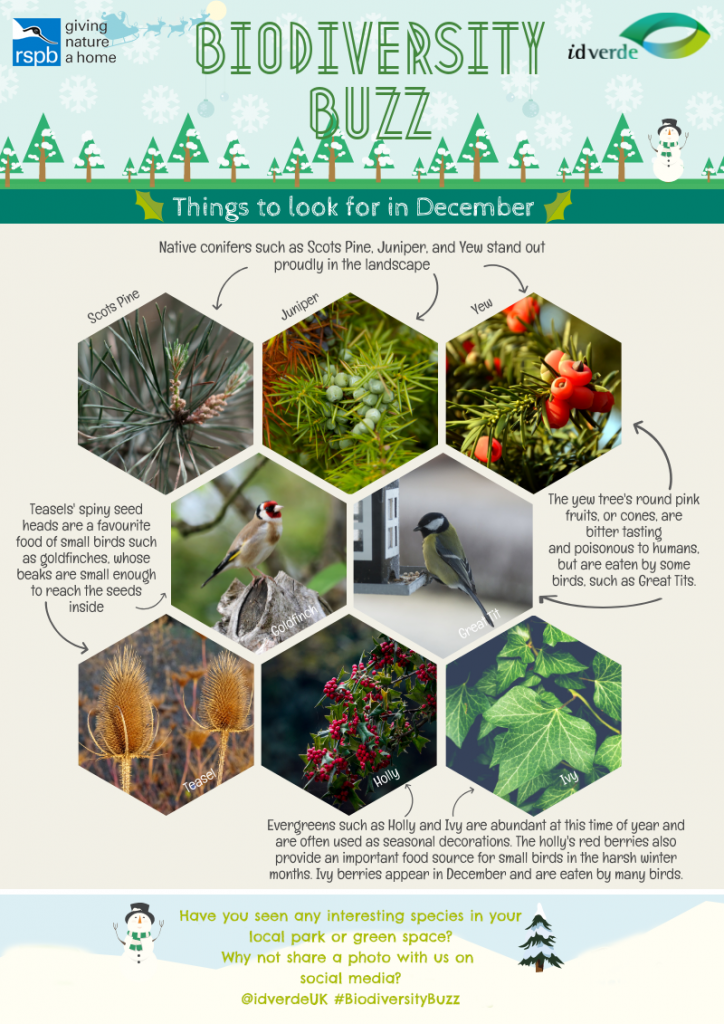
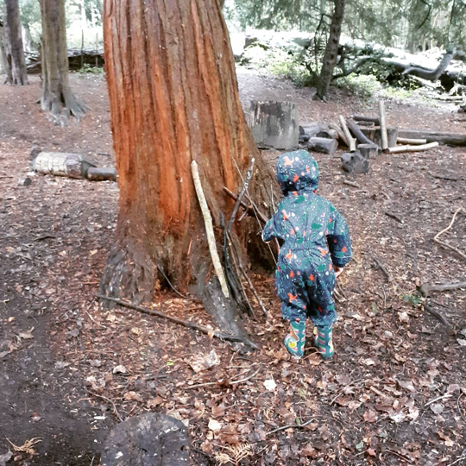


16th November 2020
At the beginning of August, the BEECHE manager and their team member were able to recommence the physical delivery of public events. They offered a range of daily outdoor activities which appealed to various age groups from adults to toddlers, including meadow safari, pond dipping, nature journaling, den building and much more. These sessions took place in all three of our sites; High Elms Country Park, Crystal Palace Park and Brook Lane Community Garden. They were well accepted and family groups were grateful to be able to attend some kind of activity session as most recreational venues remained closed during this period.
When the school term started in September the schools themselves were not able to justify coming on extracurricular school trips to our sites. This came as a result of the dangers posed by coronavirus, the costs incurred through coach companies etc and the lack of time to plan for such a trip given the time lost in the last school term and the catch up time required by all year groups. The combination of these circumstances left a gap in our normal September/October term output. They realized we now had a narrowed but reliable group to target – the toddlers.
The team decided to continue running the Wednesday schedule we had started in summer. Woodland Explorers in the morning and Story Time in the afternoon. Woodland Explorers has always run on a Wednesday morning, but the addition of a story time session offered something later on in the day with a literary twist. The number of individual people we could have in a group remained at a maximum 6 people for a few weeks. This capped how many toddlers we could actually entertain, only two or three per group as their parents/carers were there to supervise them.
Feedback provided by attendees showed there was a clear demand for more toddler sessions. Many toddler groups and clubs in the borough had not yet begun offering their services to the public, therefore we had an increased demand for tickets. Upon discovering this, we trialed running toddler sessions in our secret garden site in Crystal Palace Park. This not only doubled the toddler events we offered, it also meant we could engage with a different geographical area and population of the borough of Bromley.
These proved to be successful and many families were overjoyed to attend our toddler sessions. In mid-late September, we were allowed to up our group sizes. This alteration made a huge difference as we were allowed to start having groups of up to 15 at High Elms Country Park and up to 9 at Crystal Palace Park. These numbers were chosen after much deliberation regarding the spaces we can take our groups to and if they could easily socially distance from each other.
The safety of our customers has always been of great importance to us at BEE. To ensure that customers were and felt safe throughout this entire period we had to plan sessions more thoroughly than usual, regarding the activities to run and the resources and equipment required for them. This included constant sanitisation of equipment that may not have been quarantined for long enough and the preparation of dividing up equipment so each family bubble could have access to what they would use without the need to cross contaminate with other fellow customers. Customer feedback from a survey we published showed that 95% of respondents stated they felt ‘very safe’ during our session and the other 5% said they felt ‘safe’. This reflected how we had managed to achieve a very significant goal.
The reaction to the increase in group sizes was of great appreciation as parents and carers had been struggling to book onto our sessions for the past month because of our restricted numbers. Since we have had more toddlers at both sites it has made the dynamic of the sessions more busy and active and gives the children a chance be in the presence of other children of their own age, whilst socially distancing. This programme continued up to the October half term where we then resumed a holiday timetable offering a variety of session to children who were off school. After this we planned to increase toddler sessions again by running them at our third site, Brook Lane. We had already taken bookings for these sessions too, however the second national lockdown was announced on Saturday 31st October to commence on Thursday 5th November and last until Wednesday 2nd December. This lockdown has again resulted in the cancellation of our public event offerings and therefore we have had to process many refunds to customers who had booked on toddler sessions throughout the month.
The customers the team have engaged with over the past three months have been excellent at understanding the situation we find ourselves in as a business and abided to our covid secure measures. It is a joy working with the families that return week after week and seeing the toddlers learn and grow throughout the time they attend our sessions. We hope to resume the toddler sessions after the lockdown has lifted.
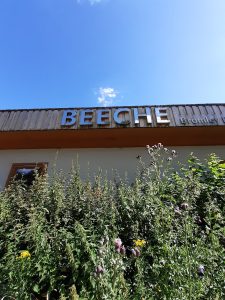
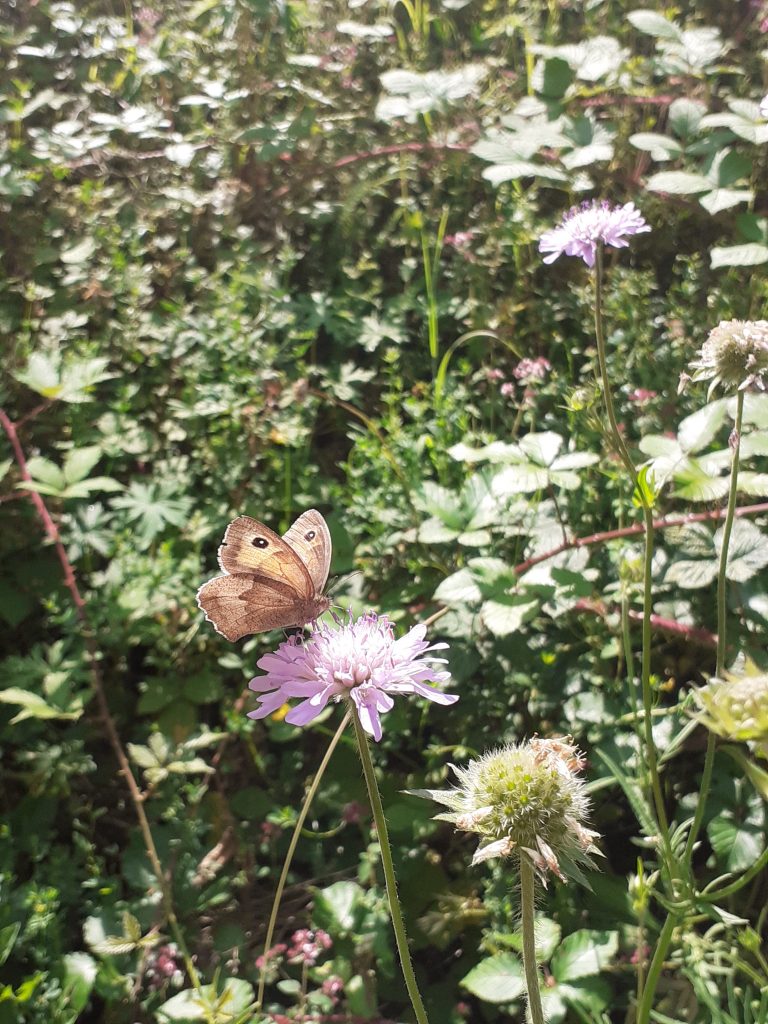
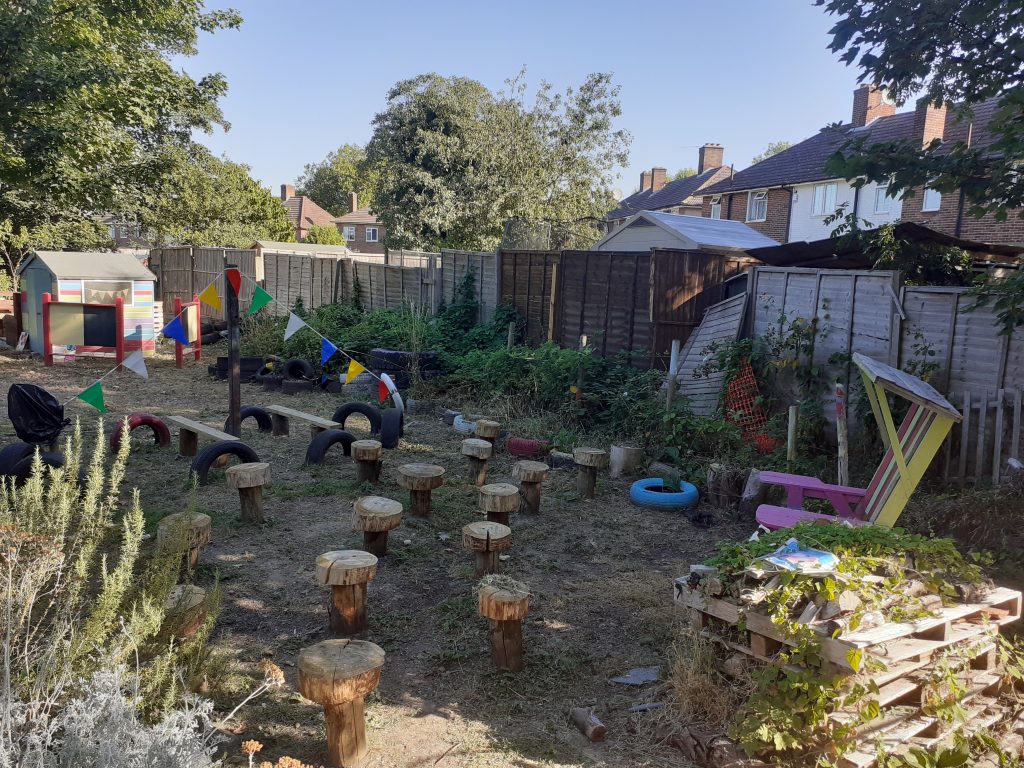
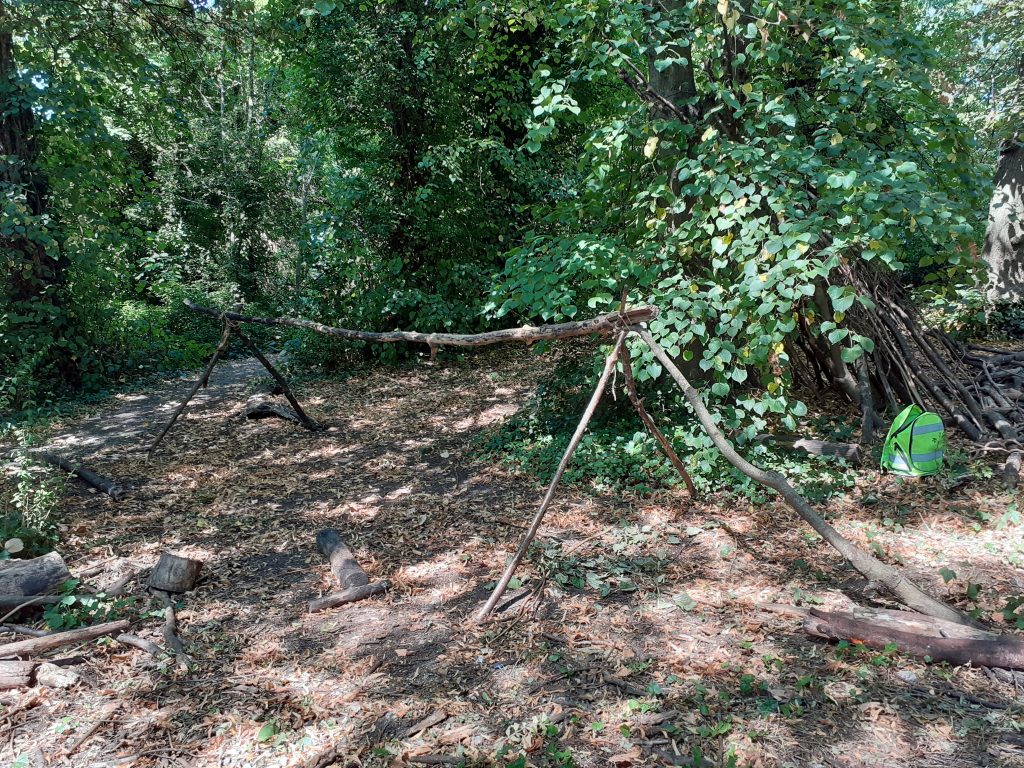
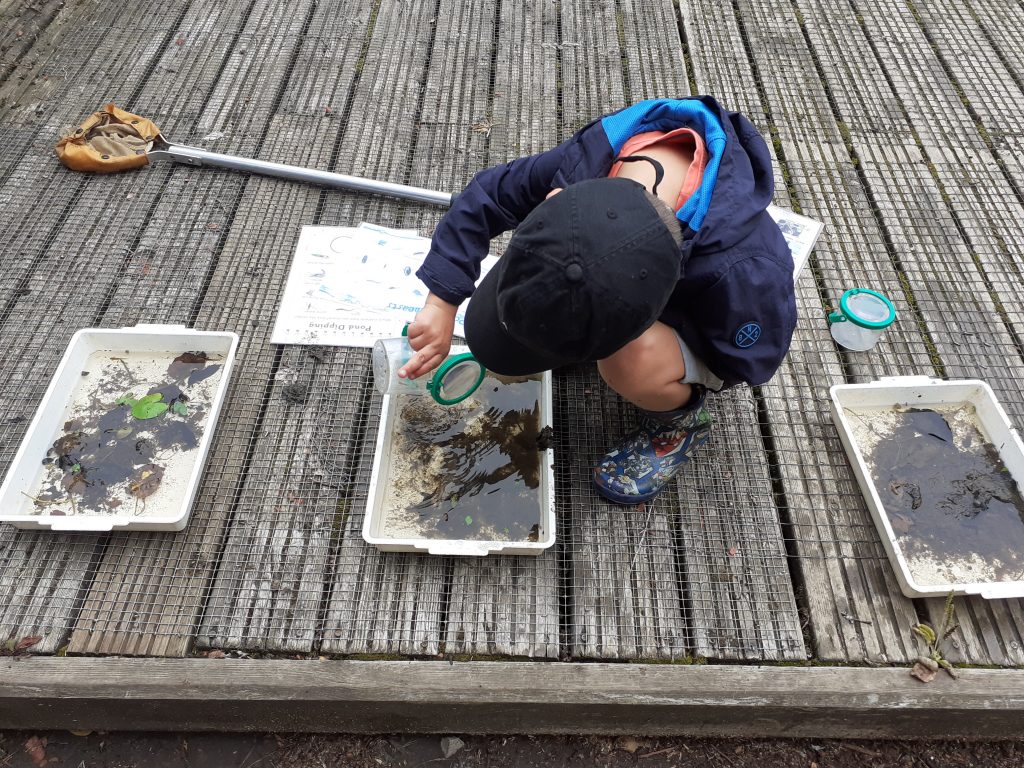
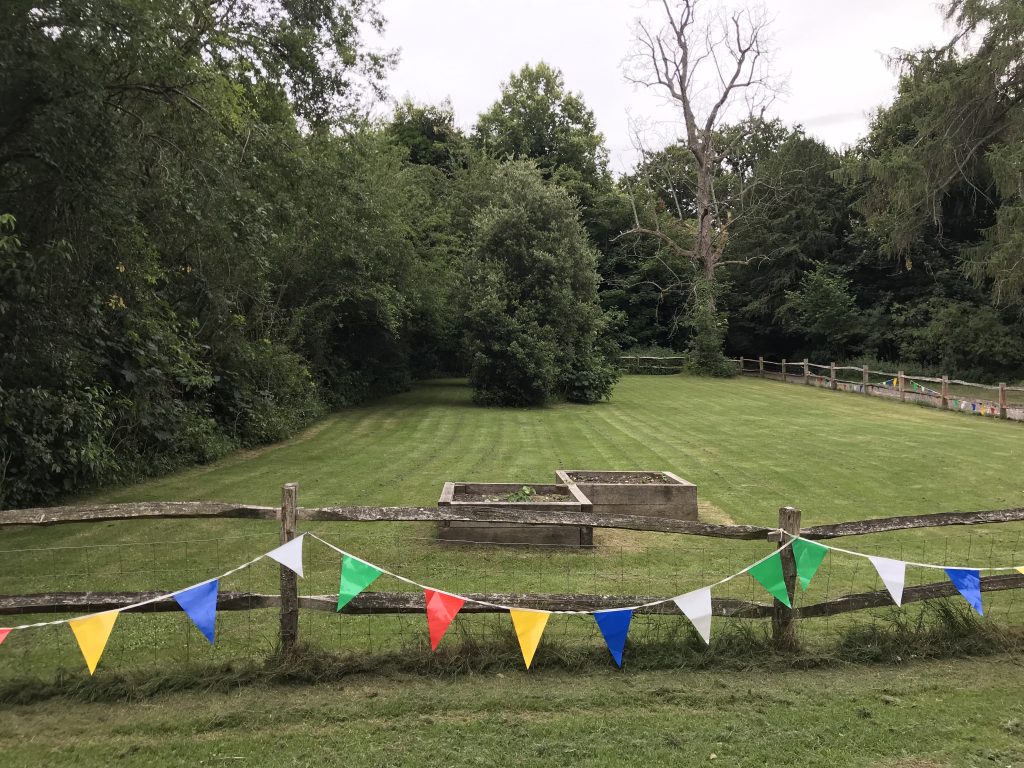
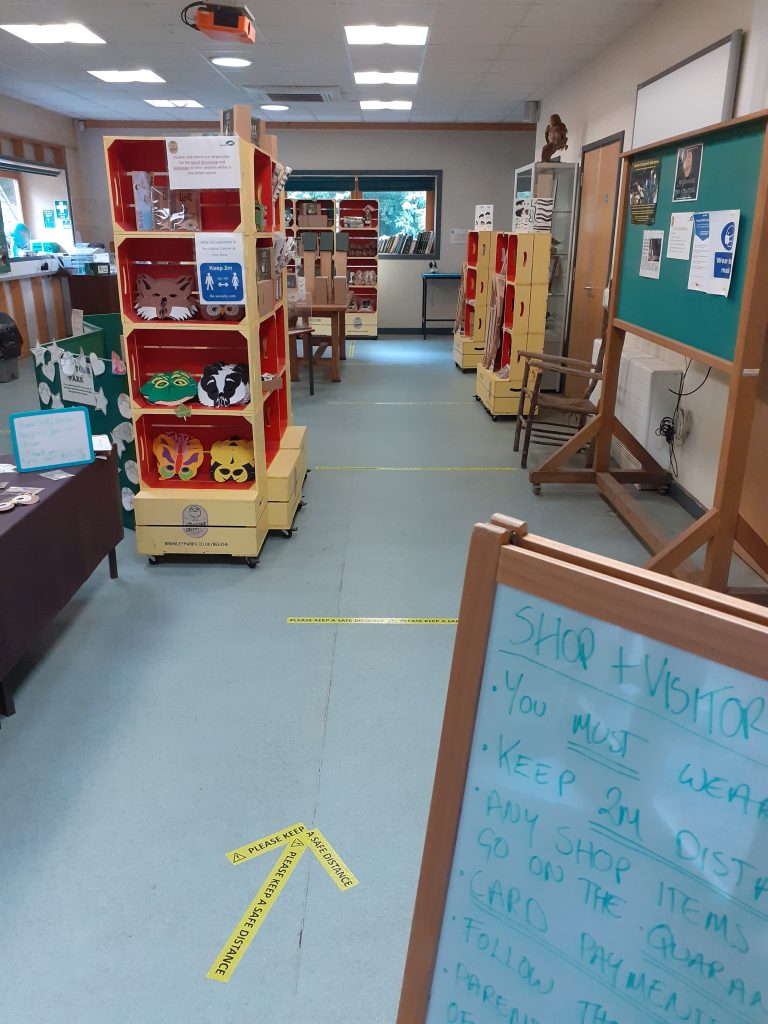
19th August 2020
The coronavirus pandemic has hit us all in ways we could have never imagined. As a business, we have sympathy with all those attempting to keep afloat during these unprecedented times. Our business activity has indeed had to change to cope with the national lockdown and post-lockdown situation. Re-opening the education centre this summer has therefore been a project encouraged by the company to attempt to recover from the financial and societal changes we have all endured for five long months, much like other businesses across the world.
As part of our contract with London Borough of Bromley, idverde run the Environmental Education Centre at High Elms Country Park (BEECHE), and now educational services at Crystal Palace Park and Brook Lane Community Gardens too.
The process of re-opening after lockdown was a very uncertain time. We had to take a cautious approach to ensure we were sticking to both government guidance and company health & safety regulations as restrictions were getting eased. We had missed out on our busiest months from April through to July and our finances have suffered as a result.
As covid-19 was becoming more of a national threat in March, the BEECHE manager started working from home as she was pregnant and was therefore on the ‘at risk’ list. As the instructor of BEECHE, I closed the centre on Tuesday 24th March and began working from home for a week and a half until I was furloughed from 6th April – 26th May. The manager was continuously working from home throughout, making detailed plans for blended learning schools programmes that could be delivered in the autumn term. Upon my return to the centre on Wednesday 17th June, I had a site induction about the new regulations in place at the High Elms Depot. My manager went on maternity leave on 1st July, so we had a narrowed cross-over period before I was working independently.
The new manager started on Monday 13th July meaning we could kick-start ourselves back into action to try and figure out what we were permitted to do within the guidance of our company and the governments’ restrictions. We began offering public events by Monday 27th July at High Elms, Crystal Palace Park and Brook Lane Community Gardens with strict covid-secure measures in place to ensure the safety of customers and staff alike. Sessions have been very well received and customers have enjoyed of the activities offered. Limits on group sizes to six people (including the instructor!) have changed the dynamics of our public events sessions, but this is a minor concern considering the seriousness of the country’s condition over the past 5 months. Extra measures involve meeting and conducting all sessions outside, keeping a 2 metre distance between staff and family groups, disinfecting or quarantining equipment before and after customer use and keeping customer details for 21 days for track and trace purposes.
The visitor centre attached to BEECHE re-opened on Saturday 1st August. Several measures were introduced here too to comply with regulations regarding retail spaces including a one-way system, a quarantine table, sanitisation stations and sneeze screens.
Luckily, being an outdoor education centre and provider of outdoor events, there have been more opportunities for us to begin business earlier than a lot of others during the coronavirus pandemic and we are grateful to be at work and be able to offer outdoor events for the wonderful population of Bromley and beyond.
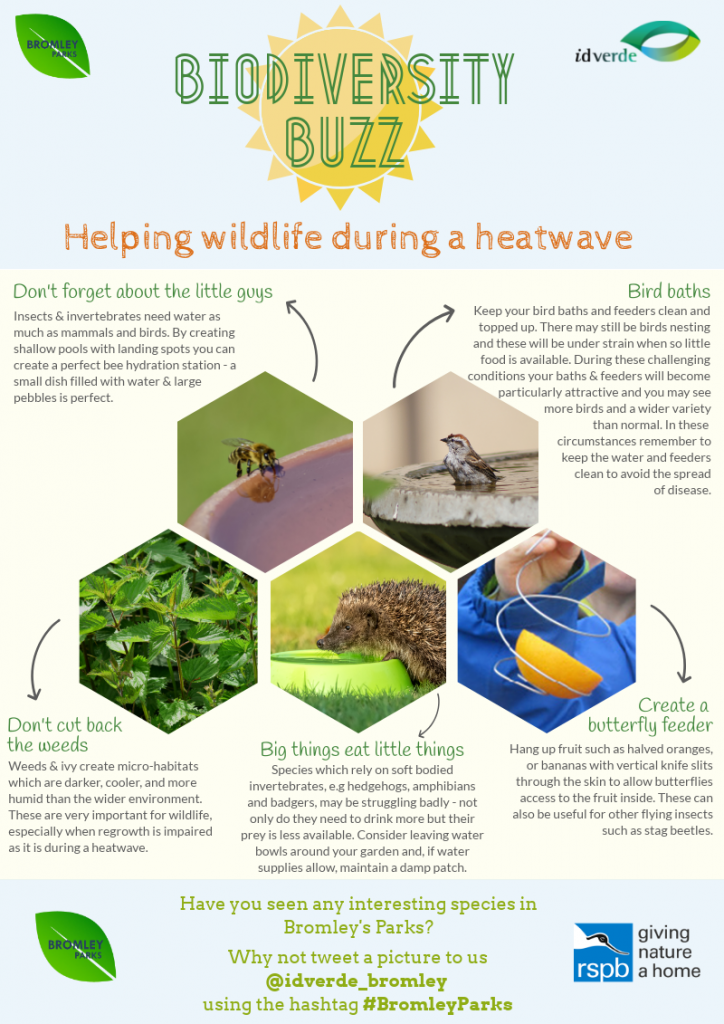
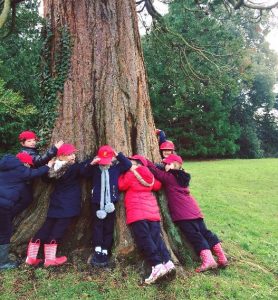

1st July 2020
As part of our contract with London Borough of Bromley, idverde run the Environmental Education Centre at High Elms Country Park (BEECHE) and are required to ensure the service is fully compliant with national guidance and maintains Quality Badge status.
The Quality Badge is awarded by the Council for Learning Outside the Classroom (CLOtC), a registered charity. We know it is essential to maintain this official quality mark that recognises the excellence of our learning sessions and the rigor of our health and safety processes. We also know that holding the CLOtC Quality Badge makes us more accessible as it is recognised and trusted by schools and community groups, facilitating their own health and safety processes when booking with us.
The CLOtC assessment framework ensures we keep up to date with best practice and regularly review our standards. It tests our processes of session development, staff training, monitoring and evaluation of sessions including whether clients consider we offer value for money. As part of the application, CLoTC staff are able to review the centre’s resources and records, observing sessions and meeting staff.
It has been a pleasure to share our work with an organisation which is equally passionate about promoting the connection between education and care for the natural world. We have a shared mission in providing positive, active and fun experiences which support wider learning and promote respect for each other, our communities and our countryside.
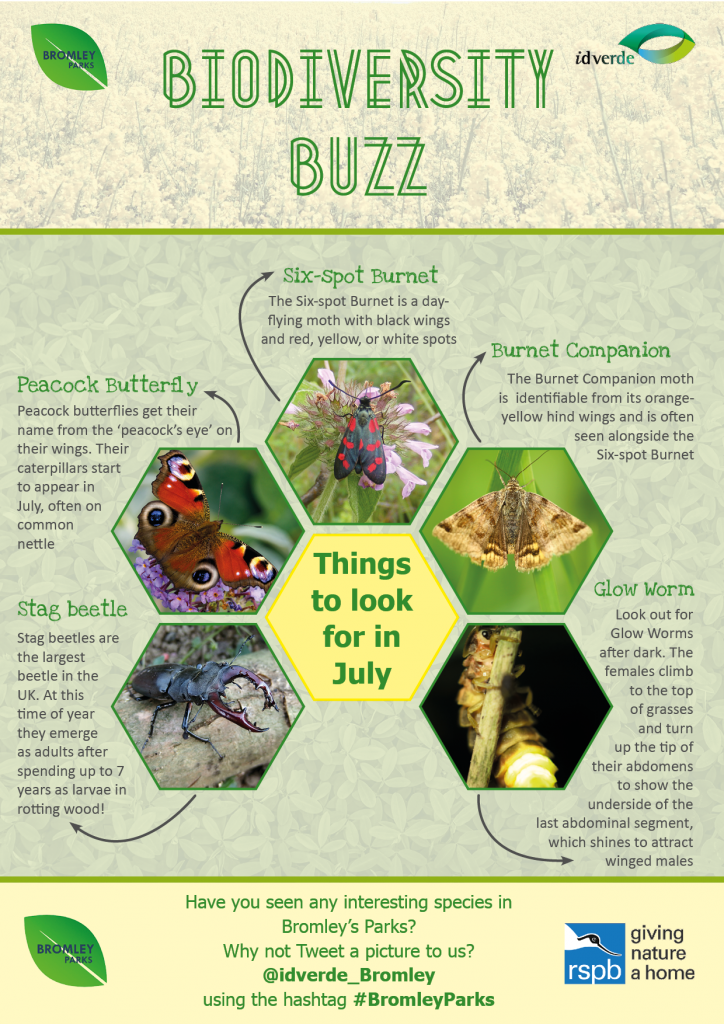
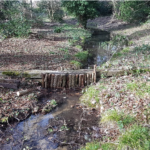
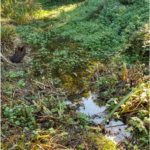
27th March 2020
Darrick wetland is a mix of marsh and woodland habitat, which historically remained wet throughout the year as it is fed by ditch networks across the site, which in turn lead into an underground stream adjoining the Kyd Brook. Extensive works were undertaken on the marsh to install a spillway water control structure, this was both as a flood defence and to help establish the marsh as a permanent feature. However over time, the water has managed to divert itself around the spillway, which means the water is simply draining away and the water levels cannot be maintained.
This has had an effect on the wildlife in the marsh, which was once an important habitat for unusual plant species and amphibians, including the protected Great Crested Newt, which have been historically recorded on site. However with the marsh drying up during the summer, it has become unsuitable as a breeding site. Sadly an amphibian survey conducted in 2018 revealed there was no presence of the species.
Beginning in 2018, following site visits and liaisons with an RSPB Wetland Advisor and a Natural England officer, a restoration project was planned to restore the marsh as a wetland habitat
A monthly water level and quality survey was conducted throughout 2018 to generate a picture of how low water levels have come. Amphibian, plant and dragonfly surveys were also conducted so an overview of the species present before management begun were generated.
Low level management then began with the Friends of Darrick Wood clearing the vegetation around the marsh, felling willow, renowned for its high absorption of water. This allowed for more light to reach the heavily vegetated pond
In early winter 2019, idverde employed a contractor to dredge the marsh. Silt was removed using a mini digger, which deepened the area nearest the spillway. Spoil from the dredging was then used to fill the channel carved out by the water, therefore restoring it to its original function.
Additional spoil was left around the bank of the main pool to allow invertebrates to return to the water. Following the works the bank looked a little war-torn however this has once again become smothered in vegetation, so no signs of the works are immediately visible.
The RSPB Wetland Advisor suggested installing leaky dams to help slow down the movement of water further up the marsh, away from the spillway, to encourage the land to become boggy and diversify the species which thrive here. In 2019 work began to create this habitat, with short stakes of elm coppice being driven side by side into the marsh, along existing sleeper bridges. This has created a permeable barrier, which still allows water to trickle through, however the area behind the dam backfills to create a damp habitat. During winter works of 2020 the Friends of Darrick and Newstead Wood installed a further two more leaky dams using the elm stakes supported by already felled timber found around the marsh.
Following the dredging works in the wetland, the water was held throughout the entire year. This gives fantastic prospects to species returning or colonising the marshland habitat. We excitedly recorded the first ever Willow Emerald damselfly in the marsh in early September 2019. This newly colonising species has only been recorded in the Bromley Borough since 2016, therefore this gave us all a real sense of achievement. We are now hoping that the Great Crested Newt will return to the waters in the upcoming years. Surveys will begin again shortly, so our fingers are crossed!
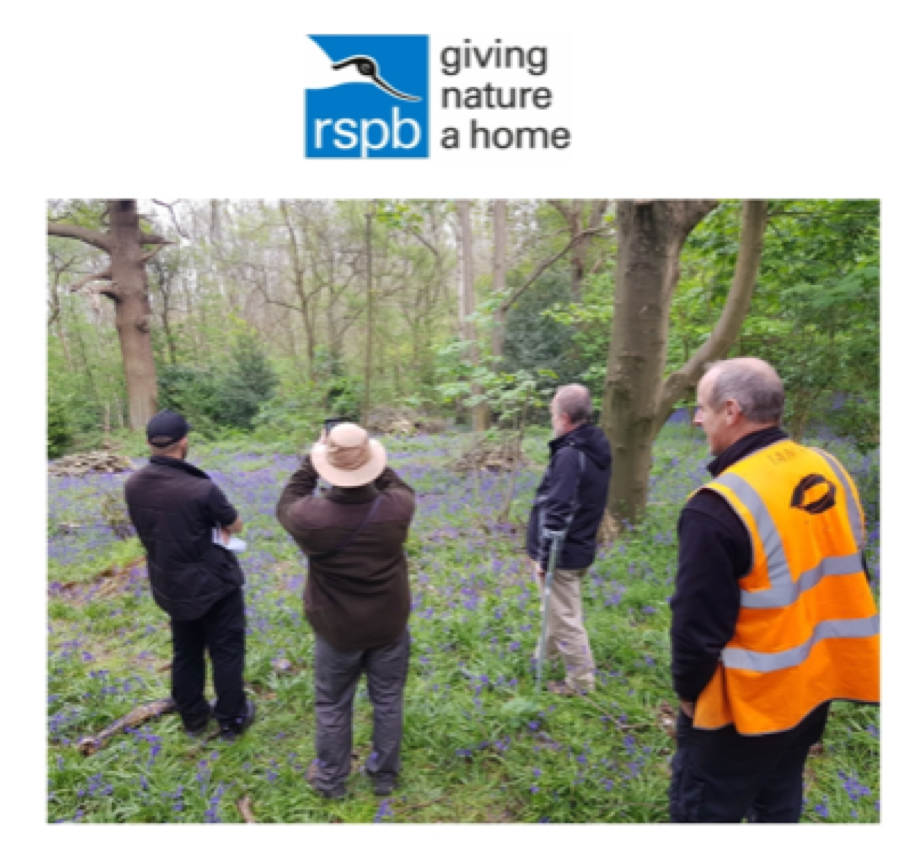 19th July 2019
19th July 2019
During April 2019 the idverde Bromley Countryside team had a woodland training and advice session with RSPB woodland advisers Nigel Symes and Dr Richard Black. The two day visit included a classroom session to discuss contemporary woodland management tools and techniques while highlighting how the decline in woodland management has been detrimental nationally to many species .
Woodland management techniques can prevent the decline of several priority species including greater spotted woodpecker, marsh tit and hazel dormice, all of which are found in the London Borough of Bromley. The rest of the time was spent out on site looking at a range of woodland sites and situations including small woodlands, coppiced woodland and large woodland sites such as Scadbury Park (Local Nature Reserve) and Crofton Woods (SSSI).
The advisers have since produced a report on their visit to support management plans and future management practices. Our habitat managed is a critical element of achieving the Bromley Biodiversity Action Plan and is supported by our partnership with the RSPB.
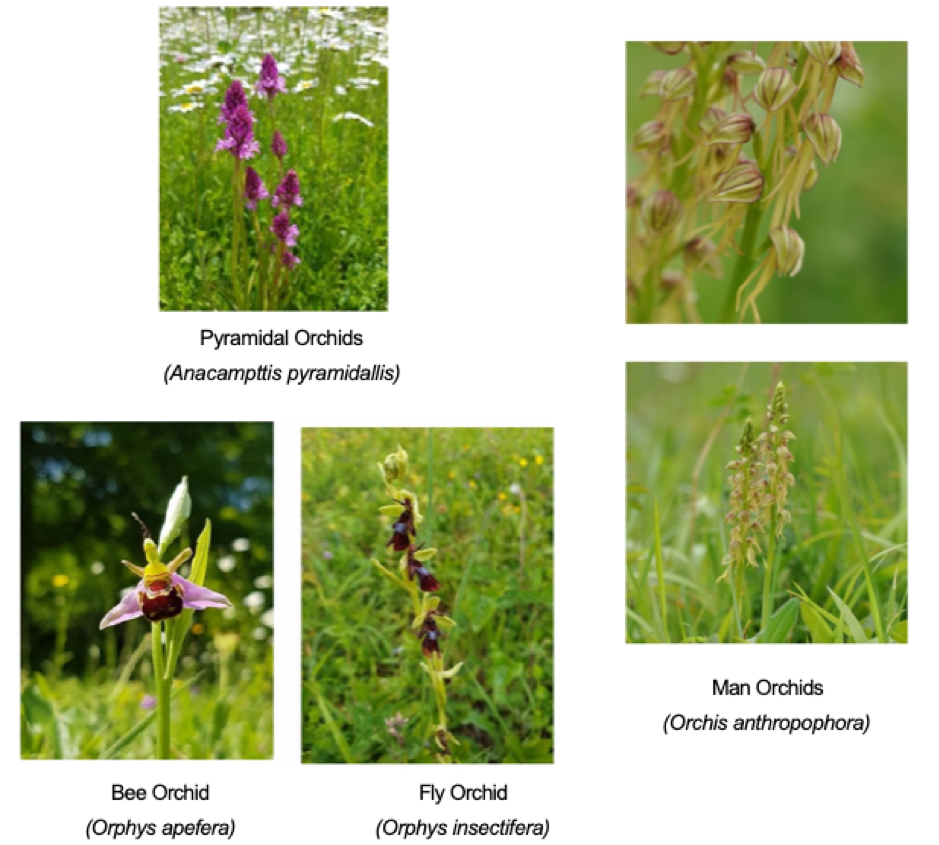
 15th July 2019
15th July 2019
On the 31st May 2019 idverde in partnership with the RSPB were privileged to be visited by the International Orchid conservation congress. This is a delegation of conservationists from all over the world specialising in orchids. The congress is headed up by professors Michael Fay and Mark Chase of Kew and focusses of the threats and management practices effecting orchids globally. Within the London Borough of Bromley idverde manages Hangrove a large site situated in the Cudham Valley with landscape connectivity to High Elms Country Park and the wider Cudham Valley including Downe Bank. This area is steeped in natural history having once been a place where Charles Darwin came to study orchid and other natural curiosities.
“Hangrove [now managed by idverde] had been one of the favourite near walks in old days The view was strongly characteristic of the country, and had the somewhat melancholy charm of our chalk landscape – the waterless, uninhabited valley, the rolling contour of the country, yews in the hedges, and here and there a white chalk-pit.” Henrietta Litch- field (née Darwin), Emma Darwin, A Century of Family Letters (1904) 2.279.
The site has been managed with the purpose of chalk grassland conservation for over 30 years now after having various land uses since Darwin’s time. The site is now looked after by idverde on behalf of the London Borough of Bromley and as part of the indicators of good management we look for several key plant species of which one group of these is orchids. There are 15 species of orchids found locally .
The IOCC visit was both to see a wide variety of UK orchids and get an opportunity Darwin to explore the landscape that Darwin would have known. Our habitat managed is a critical element of achieving the Bromley Biodiversity Action Plan and is supported by our partnership with the RSPB.
“I have been examining Orchis pyramidalis, and it almost equals, perhaps even beats, your Listera case; the stick glands are congenitally united into a saddle-shaped organ, which has great power of movement, and seizes hold of a bristle (or proboscis) in an admirable manner, and then another movements takes place in the pollen masses, by which they area beautifully adapted to leave pollen on the two lateral stigmatic surfaces. I never saw anything so beautiful” Darwin to Hooker, July 1896

15th June 2019
This year at BEECHE we are offering a range of sessions that help to provide benefits to health and well-being of children and adults which includes yoga, mindfulness and outdoor activities.We currently offer yoga classes with Sandra Ajimal who is a qualified yoga instructor from the British Wheel of Yoga, every Sunday for a wide audience with mixed abilities. This has ensured that we run an inclusive session for all.
We have now incorporated a Relax kids programme into our public activities. These sessions are unique, fun and engaging for children and led by Catherine from Relax Kids Biggin Hill, a qualified and experienced teacher specialising in SEN, and a certified Relax Kids coach. This May half term we are running a workshop for children and their parents using techniques that will help children to feel happy, calm and confident, and can be used at home to help the whole family take care of their emotional wellbeing. BEECHE has been working with Bromley Clinical Commissioning Group and have now been listed on the Mental Health & Emotional
Wellbeing Directory of Services for Children and Young People in Bromley. We will be staging a health and well being open day over the summer to provide free yoga, Nordic walking and nature walks to adults to help encourage people to take of their mental health and emotional well being.
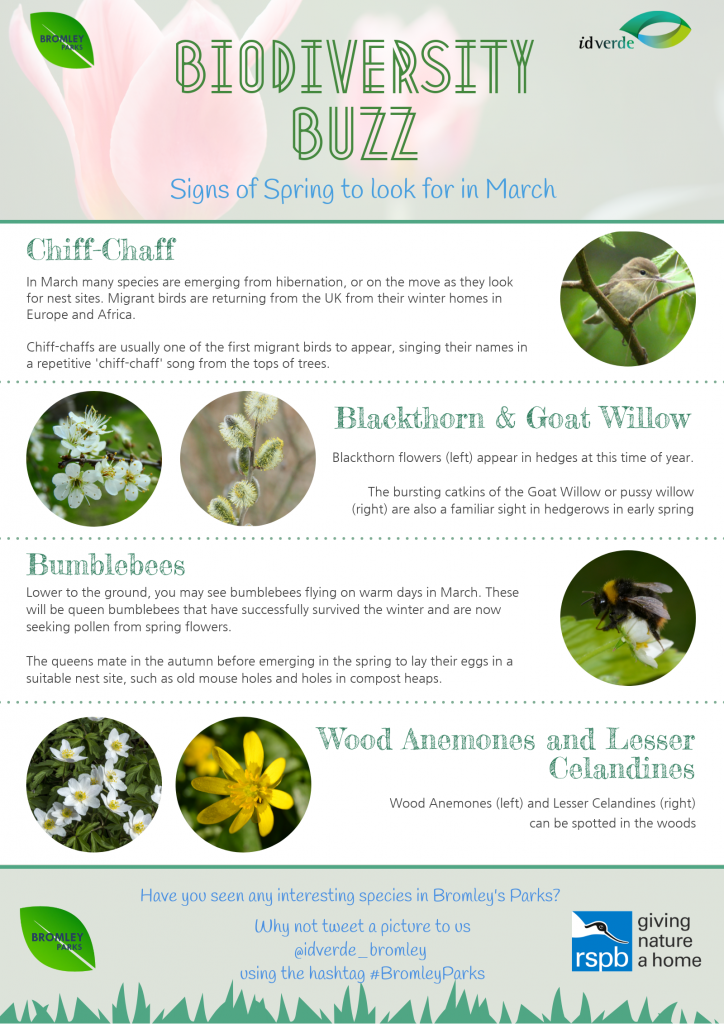
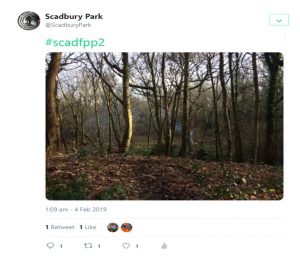
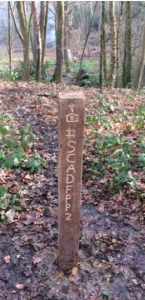
15th March 2019
To improve the monitoring of some of our most biodiverse woodland sites, the Bromley idverde countryside team have been undertaking a suite of surveys over the last year, covering both flora and fauna.
To supplement this, the team have also begun setting up fixed point photography locations on a number of sites. This involves taking pictures from the same position over a period of years and can help monitor natural habitat change over time or changes caused by management, influencing long term management decisions.
To improve community engagement with our woodland sites and generate an interest in basic biodiversity monitoring and citizen science, the countryside team are piloting new fixed point photography posts. Three of these posts have been installed by the team in important locations for biodiversity on Scadbury Park and alongside main paths so they can be used by the public.
The posts have a slot at about 4ft from the ground in which most phones can be placed and a photo taken, ensuring a consistent field of view for all users. A hashtag is written down the side of the post (in the above case #SCADFPP2), which can then be tweeted or posted on Instagram and the image picked up and cataloged by the site manager.
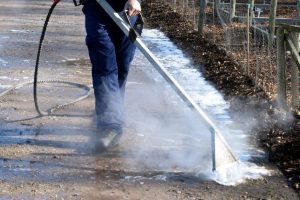
12th March 2019
idverde were delighted be rewarded the Grounds Maintenance and Parks Management contracts with London Borough of Bromley in late 2018. Launching on April 1st 2019 this marks the continuation of a relationship going back to 2010 and the commitment to a further 8 years with option to extend to 16 in 2027. As part of the new contract launch idverde have been investing in new technologies to ensure not only the best service delivery for the borough but also to ensure that we demonstrate a commitment to the environment we are managing. As such for 2019 idverde Bromley have invested in Foamstream technology as an alternative to traditional pesticides such as glyphosate. Foamstream is a technology which kills weeds using hot water which is insulated by a biodegradable foam, which critically, does not contain inorganic chemicals. The heat is the critical ingredient, the foam acts as an insulator reducing the rate heat is lost to the atmosphere. The foam can be used to control weeds, algae and moss as well as for sanitisation such as removal of gum, power washing and street cleaning. Foamstream is a technology which has been adopted by an increasing number of local authorities globally, including New York City Parks, City of Toronto, City of Munich and the City of Ljubljana (Green Capital of Europe 2017).
Foamstream has a number of benefits on top of being chemical free;
• It is weather proof meaning that unlike pesticides it can be used during wet periods
• Foamstream sterilises seeds and spores thus leading to a net reduction in weeds
• It requires less annual treatments than other pesticide free technologies
• Foamstream does not require a licence for use as it is cleared for use as an organic, non-toxic and safe product by accreditation bodies across the world including OF&G, UK Soil Association, further reducing the costs of implementation
• Foamstream is safe for use around people, animals and delicate ecosystems including waterways.
In addition to investing in Foamstream idverde have also invested in replacing traditional mechanical (petrol driven) machinery with electric. In a pilot scheme to test their effectiveness idverde Bromley have invested in 20 electrically powered strimmer’s/brush cutters to be utilised in their grounds maintenance work programmes with a view to invest further should the pilot prove successful.
These advances in the management of amenity paces in conjunction with the management of London Borough of Bromley’s countryside sites, nature reserves and Sites of Special Scientific Interest, innovative partnership with RSPB and ongoing relationships with Friends Groups for the benefit of our wider environment demonstrate an unrivalled commitment to Bromley’s greenspaces, its biodiversity and its communities.
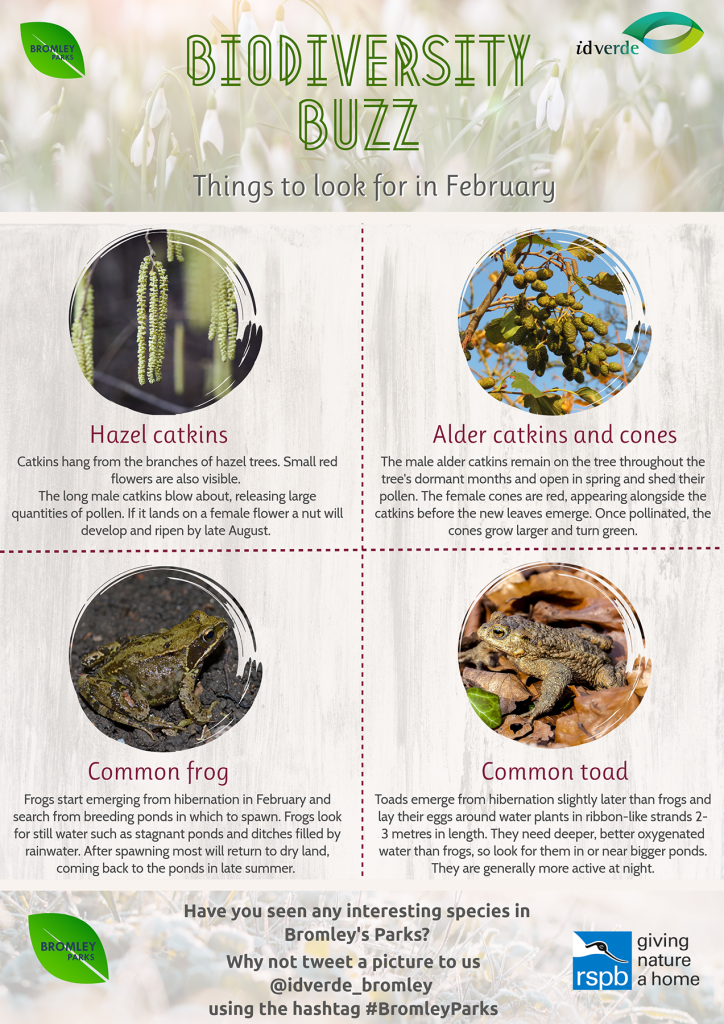
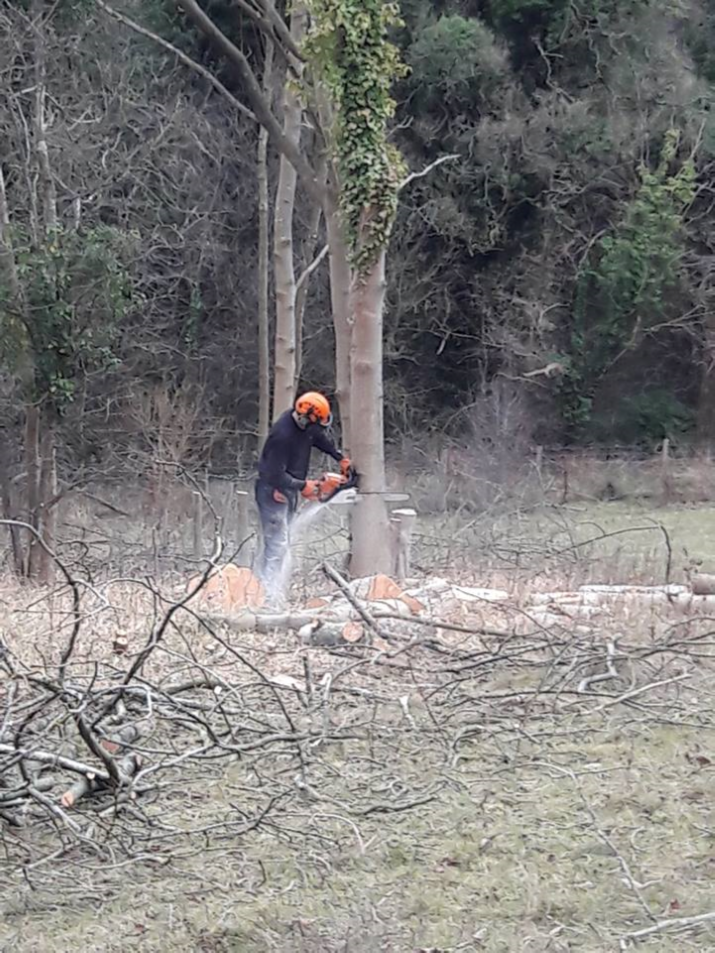
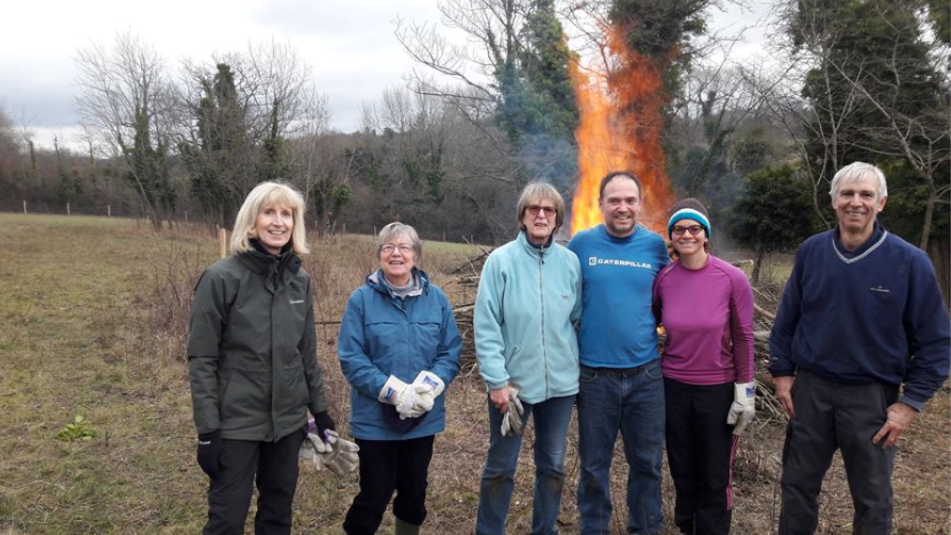
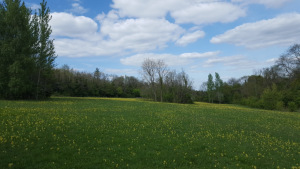
12th February 2019
Volunteer recruitment is an ongoing challenge for the conservation sector. The challenges of fitting in conservation work in the field around other commitments and busy lives often skews the demographic of volunteers and some times is a tough sell to those in full time employment. This is an ongoing challenge faced by Friends of Bromley Parks and organisations such as RSPB.
Through our formal partnership with RSBP idverde Bromley facilitated a joint work day between Friends of High Elms Country Park and RSPB Bromley Local Group. The volunteers from the RSPB joined idverde Community Manager, Ian Wright and Friends of High Elms on a chilly but dry morning, keen and ready to get stuck in. Five of their volunteers joined with the Friends of High Elms for a day clearing scrub from the islands in a conservation meadow.
The task involved a roaring fire as the work had generated significant quantities of vegetation to be cleared. Together the joint task force cleared a large area of encroaching vegetation including the arisings from several ash trees felled by idverde staff to ensure that the meadow and resident species continues to thrive.
Due to increased encroachment the trees have impacted significantly on the grassland over the past decade. As a result islands are being reduced and individual ones removed as part of an ongoing project to maintain and improve the chalk grassland.
This project was a great success and the volunteers from RSPB will be joining us all again in the future.
High Elms Country Park site manager Donna Cook said “It was such a wonderful opportunity to combine two groups of people with a shared passion and enthusiasm for nature and conservation. Collaboration is such an important part of managing landscapes and the positive impacts on the conservation meadow prove that two groups are certainly better than one!”
Monitoring of Bromley’s habitats and wildlife populations is an important element of the Bromley Biodiversity Action Plan being delivered by idverde in partnership with the RSPB. If you are interested in getting involved with your local parks Friends Group or even starting on of your own please click here for more information.
If you would like more information on RSPB Bromley Local Group please visit their website.
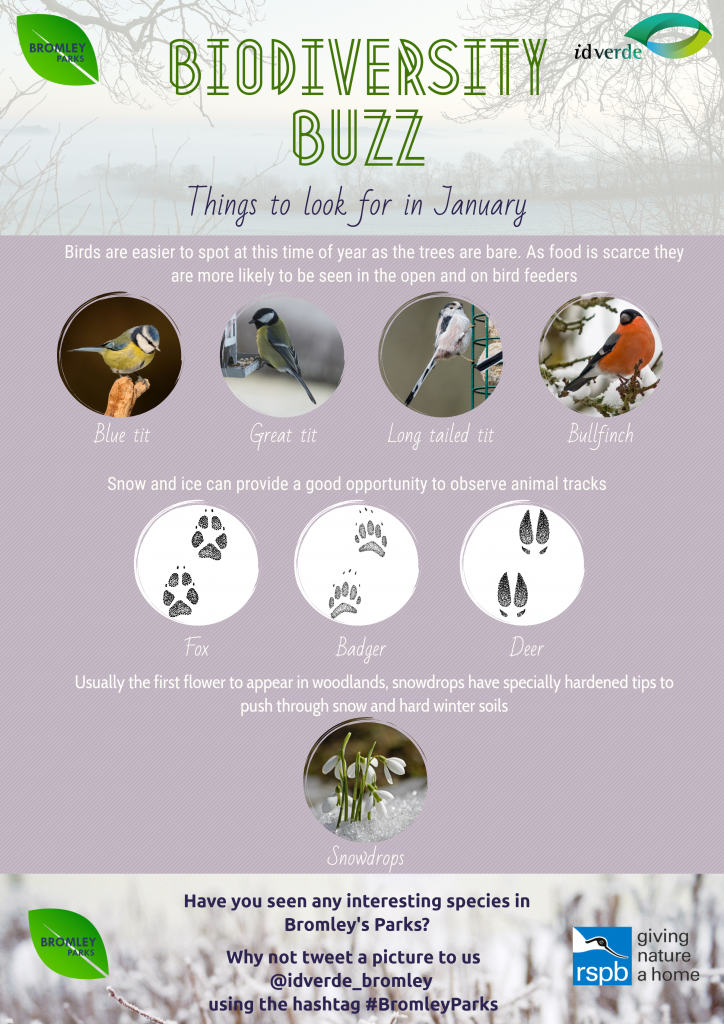
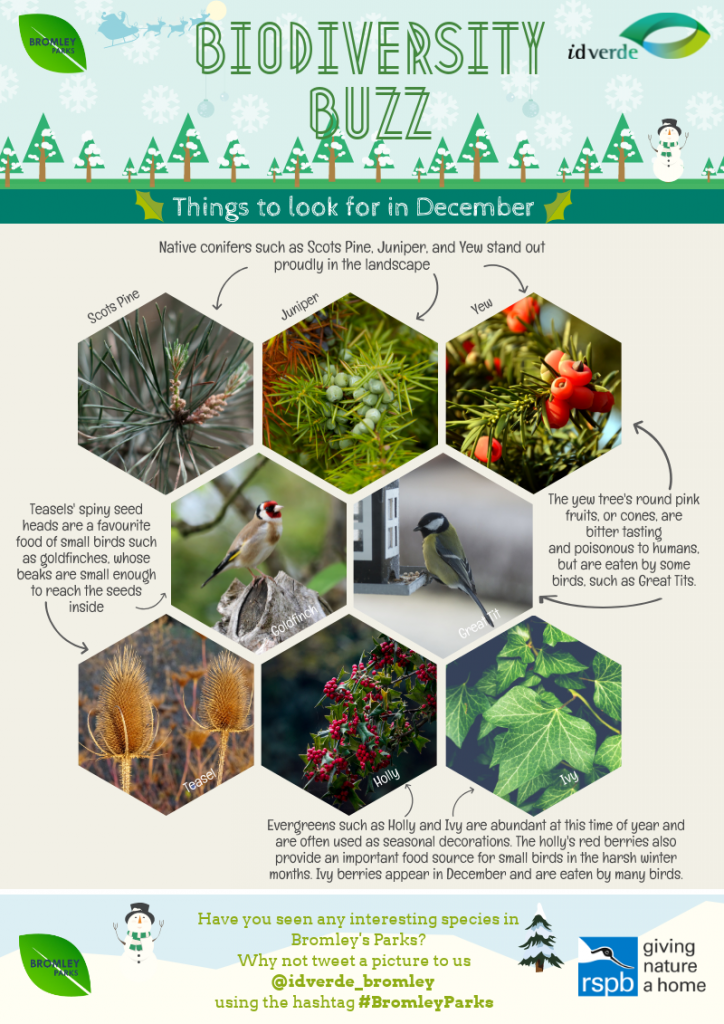
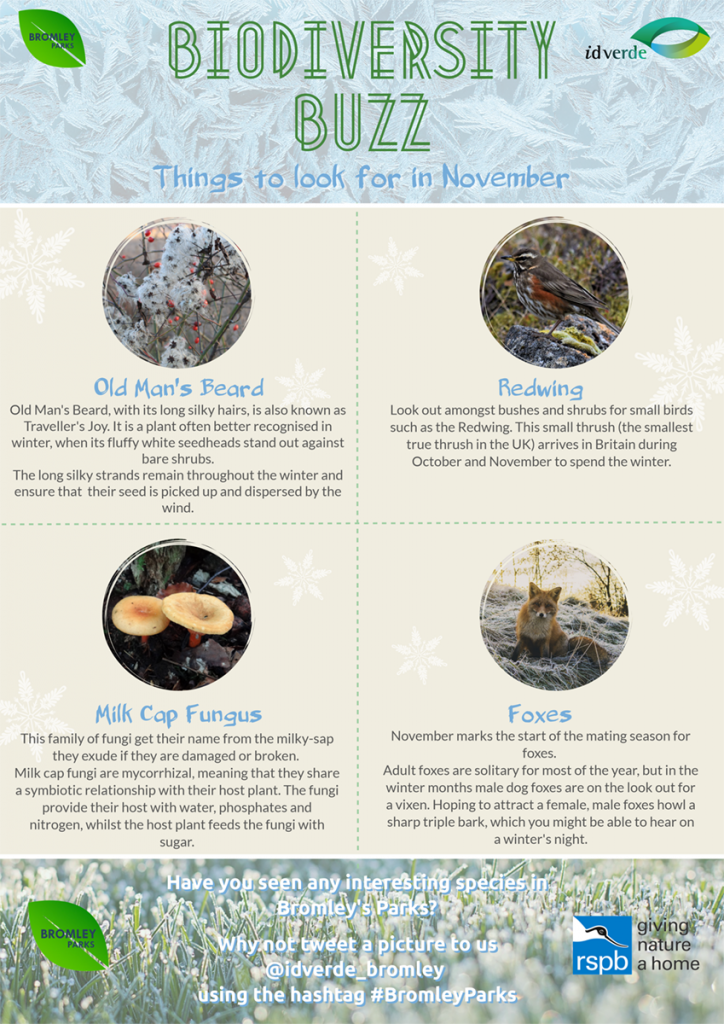
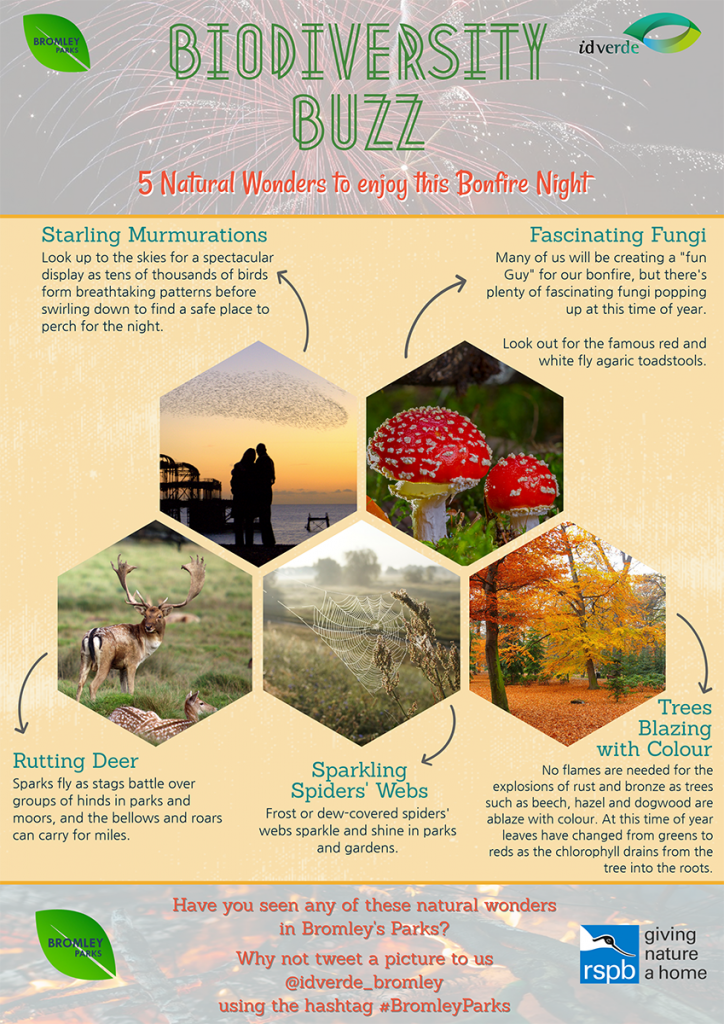
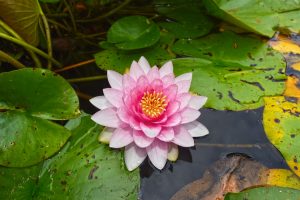
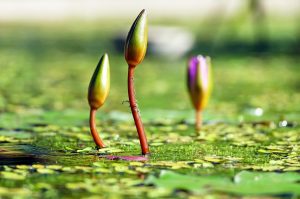
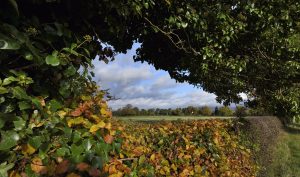
1st November 2018
Autumn is a busy time in our parks and nature reserves. Our conservation team and volunteers are busy carrying out the very physical job of managing our habitats to ensure that they are in the best condition to support biodiversity. This can often appear to be a destructive task, thinning out woodland, cutting back vegetation and clearing ponds are all important elements of positive habitat management. It is no different in your own gardens when gardening for wildlife. This is the perfect time of year to cut back the tree which has shaded your garden for the summer or clear the pond of weed which has propagated over the summer months. Birds are no longer nesting, amphibians have left the water and many invertebrates have gone into a winter torpor. It is also a great time to start thinking about next year’s wildlife garden and begin planting wildflower seeds.
Here are some of the tasks you can be getting on with to create your own home for nature.
Maintain your ponds
Ponds naturally decrease in size as pond plants grow and die and other dead plant material (leaves) enters the pond. Over time ponds become marshland and eventually woodland. To keep a pond therefore requires regular maintenance, removing dead plant material and reducing the amount of plants in the pond as they grow and reduce the amount of open water.
Reduction and removal of plants from ponds should be carried out from late September- end of October when there is less activity – young frogs, newts, toads and many invertebrates- such as adult dragonflies have left the pond but those animals which remain are not yet dormant- some frogs and other animals hibernate in the mud at the bottom of ponds.
Lift vigorous plants such as iris and divide, returning about 1/3rd to the pond.
When you remove plants from the pond, leave them at the edge of the pond for 24-48 hours so that some of the small animals in them can return to the water.
In winter cut back any trees which threaten to overshadow the pond to maintain light levels and reduce nutrient input from dead leaves.
Over the years, as silt builds up in the pond and it becomes shallower it may become necessary to partially dredge it. Again this will need to be done late September- October, but only 1/3-½ the pond should have silt removed at any one time and dredged material should be left at the side of the pond for about 2 days, to allow some of the aquatic invertebrates in the silt to return to the pond. Silt needs to be removed very carefully so as not to damage the liner.
Trim Your Hedge (Carefully)
Trim hedges between 31st November and 28th February (preferably in January or February) so that birds and animals can eat any fruit in autumn and nesting birds are not disturbed. Try to avoid always cutting the top of the hedge at the same height to prevent a hard knuckle of wood forming at the trim line. The development of a trim line leads to mushroom shaped growth and gaps forming at ground level. Allow native climbers such as white bryony and honeysuckle to weave through the hedgerow once it is well established. Don’t remove or cut grasses and other vegetation at hedge bases. This is a very important part of hedgerow habitat and will be home to many invertebrates, e.g. butterfly caterpillars as well as larger animals such as toads, slow worms, shrews, voles and hedgehogs. Toads and hedgehogs may hibernate here. If absolutely necessary, cut the herb layer adjacent to the hedge every other year in autumn/winter and remove dense cuttings. Leave the herb layer at least 4cm high and do not expose bare soil.
Cut back Trees (if necessary)
Trees are mini ecosystems in their own right and are teeming with life year round. However most garden trees do need to be cut back now and then. This is best don’t after leaf fall. There is no danger of disturbing nesting birds and many invertebrates are hibernating. Although it is unlikely that average garden trees would contain bat roosts if you have any concerns this may be the case please seek further advice. Why not use the cuttings to create log piles or bug hotels in your garden?

31st October 2018
November is an exciting time for people, fireworks and bonfires helping to bring communities together. It is important though to remember our wildlife during this season. Working with idverde in partnership for Bromley’s parks RSPB have developed guidelines to ensure that wildlife stays safe while we enjoy our bonfires.
Event organisers and people having their own parties should leave bonfire-building as late as possible, says the RSPB, as this will avoid hedgehogs and other wildlife mistaking the woodpiles for cosy winter quarters. Bonfire makers are asked to look out for frogs, toads, newts, slow worms, common lizards and grass snakes, which all use log piles for shelter and sleep during the winter months. These animals tend to move slowly when the temperature is low and would have difficulty escaping a roaring fire.
“Bonfires and fireworks are great fun and we want people to enjoy them responsibly.” said Richard James, RSPB wildlife expert, “The trick with a bonfire is to build it with leaves, twigs and logs on the day to avoid wildlife moving in overnight. Generally birds can cope with the disturbance caused by thunder and lightning, so firework displays are not a big issue, but it is best to avoid areas where they are known to be roosting.
“As well as – or maybe even instead of – watching the fireworks this year, we’re urging people to take in some of the UK’s most exciting wildlife sights, which we think are more than a match for any pyrotechnic display. There are no damp squibs when it comes to nature at this time of year.”
To encourage people to watch a wildlife display as well as the fireworks this year, the RSPB has come up with a top 5 list of nature spectacles to enjoy this weekend:
1. There are plenty of “oohs” and “aahs” as people look up to the skies for a spectacular seasonal display. Starling murmurations involve tens of thousands of birds wheeling and swooping in vast clouds as they settle into their evening roosts in trees, reedbeds or even under piers. Starlings form breathtaking patterns in the skies before swirling downwards to find a safe place to perch for the night.
2. Many of us will be creating a “fun Guy” for our bonfire, but there’s plenty of fascinating fungi popping up all over the place at this time of year. Look out for the famous red and white fly agaric toadstools.
3. Sparks fly as massive red deer stags battle over groups of hinds in parks and moors. The deer rut is a feast for the ears as well as the eyes: the bellows and roars of the stags carry for miles over open land. Watch from a safe distance and enjoy one of the most impressive wildlife displays in the UK.
4. Who needs Roman candles when you can have ‘Roman noses’? The owners of these noses, grey seals, along with their relatives, common seals will all be raising their pups around the shores of Lincolnshire, and the Hebrides and Farne Islands.
5. No flames are needed for the explosions of rust and bronze as trees such as beech, hazel and dogwood are ablaze with colour. At this time of year, leaves have switched from greens to reds as the green chlorophyll drains from the tree into the roots.
As well as avoiding wildlife disturbance on bonfire night, the RSPB is asking people to consider providing food and shelter for garden wildlife as the weather becomes colder, as part of the RSPB’s Giving Nature a Home campaign. The campaign is aimed at tackling the housing crisis facing the UK’s threatened wildlife. The charity is asking people to provide a place for wildlife in their own gardens and outside spaces, by planting pollen-rich plants to attract bees and butterflies, putting up a nestbox for a house sparrow, or creating a pond that will support a number of different species. The RSPB hopes to inspire people across the UK to create a million new homes for nature. So far 299,226 people have pledge to give nature a home in their gardens. A free guide is available at rspb.org.uk/homes
1st October 2018
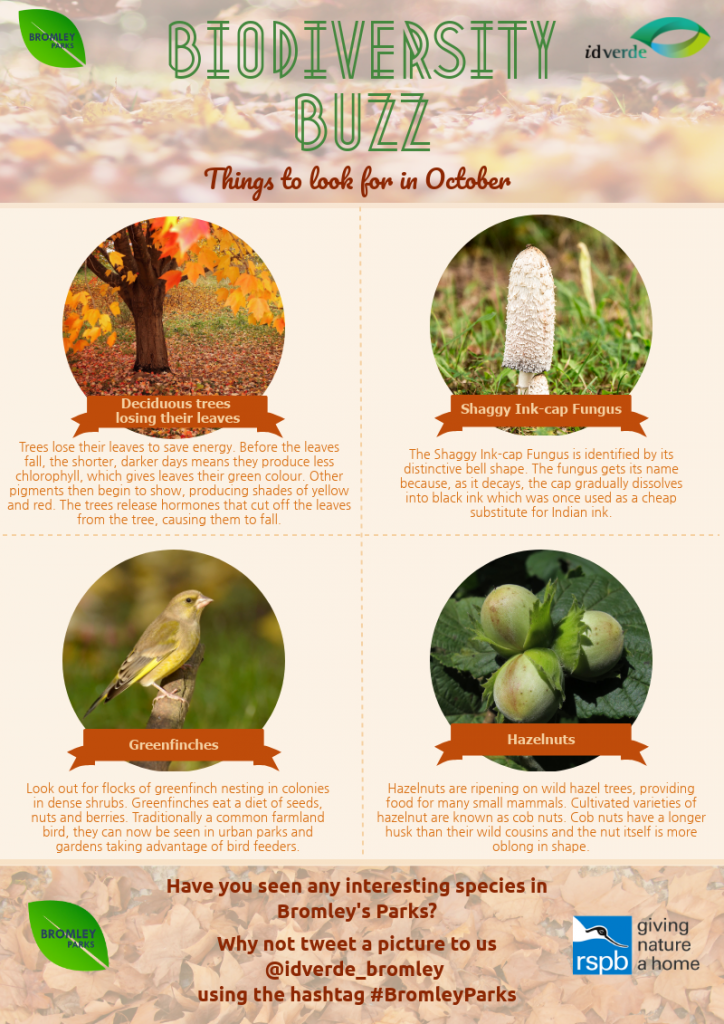
1st September 2018
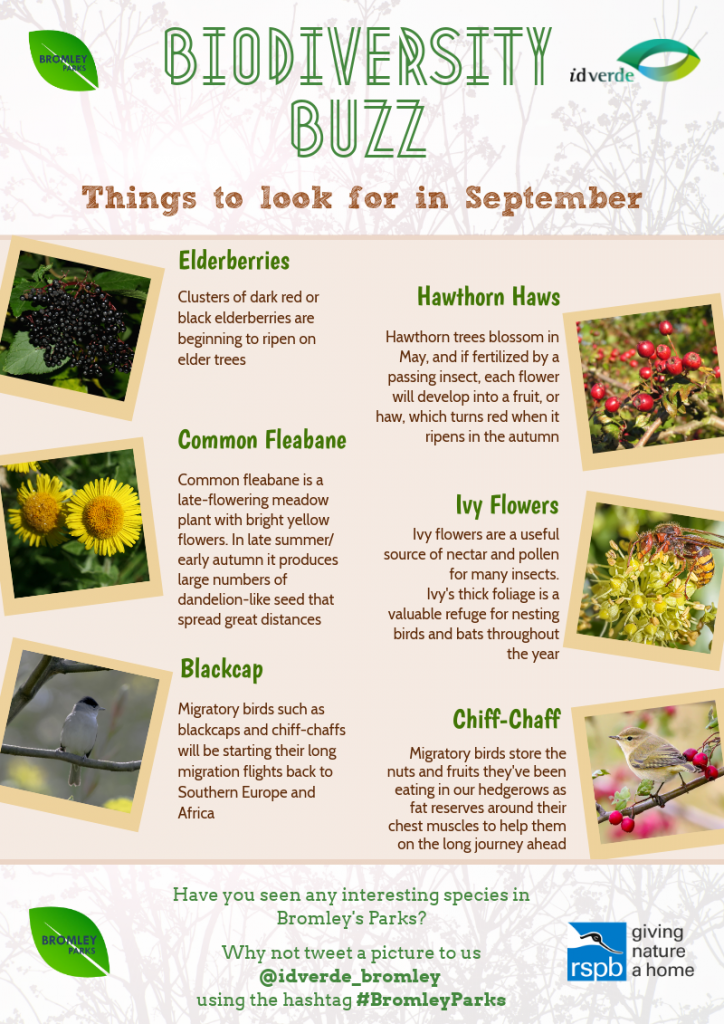
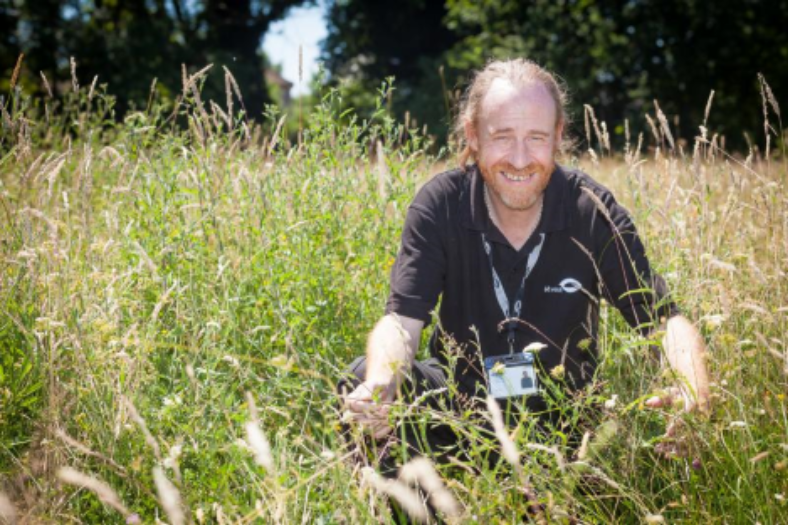
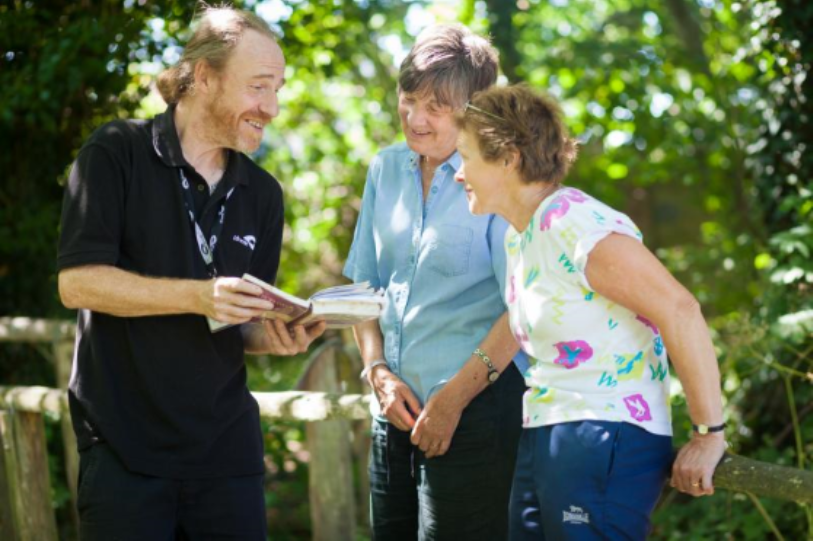
13th September 2018
It all started with a call of arms from my local community to stop the council turning our local park, Hoblingwell Recreation Ground, into a spill site from waste being removed from the Olympic site in 2009. It was part of a project that Bromley Council wanted to improve Hoblingwell Wood recreation ground in Chipperfield Road, St Paul’s Cray, by adding new trees, landscaping and general park improvements (mainly a way to stop vehicles being bunt out on the pitches).
If the scheme had gone ahead it would have seen wasteland regeneration specialists use subsoil or other inert remodelling materials such as clay, gravel or crushed fill to remodel and landscape the recreation ground. However, around 1,500 residents signed a petition against the plans as they were worried about the possible congestion, dust, noise and disruption of park usage during the 2 year planned project.
From this a Friends Groups was formed by the Council, Caroll Long and a few members of the community. I attended a meeting in February 2010 to raise an issue but somehow ended up agreeing to become their Social Secretary. I started volunteering with the group and set them up an email address, Facebook, Twitter and Youtube accounts. I then started to organise some small events such as Easter egg and Halloween hunts, nature sessions, with assistance from Caroll. We had started to become a face in the community and they loved our events. I was awarded an Unsung Hero award from the council and I was really enjoying my work with the Friends group.
Then in 2012 I lost my job. I was worried about what I was going to do and how to support my family. After about 3 months I was asked if I could do some shifts in the Rugby Club, which although was not a big pay day, was a way to support myself whilst I looked at my next option. Then Caroll had kindly volunteered me into the Bromley Friends Forum Committee, a small group that looks after all the 40 odd Friends Groups and liaises with the council and their contractors.
An email came into the Friends Forum from The London Wildlife Trust about a new opportunity – the Wild Talent Traineeship funded by the Heritage Lottery Fund. I applied and several days later got the application pack. It was a course aimed at those without a degree qualification, from a minority background, a deprived area or looking to get into the sector. It would be a full time work based course running from September 2014 to August 2015. It would also gain you a qualification in Chain Sawing and Pesticide Applications.
I filled in the application and mentioned about my volunteering and the local wildlife in my area. I also mentioned my work with the Forum and how I have been involved with the council when it comes to the matter of Parks and Greenspaces. I sent off my application and within two weeks, received a reply that I had been chosen for an interview.
The interviewing took place all day at one of their sites in Addington. It consisted of doing some grassland tasks , path clearing and interviews that were in the most unusual setting consisting of the 2 interviewers sitting on a bench and me on the grass. The interview must have gone well as four weeks later I received the call that I had been accepted.
It all started in September with numerous site visits taking in Great woodlands, vast grassland sites, rivers and pond sites and many other different habitat sites. The autumn and winter consisted of serious hard work in all weather conditions. As long as we had a fire and cuppa soup we were fine. On my birthday I passed my Chainsaw Assessment and then my Herbicide Application two months later, then in March I spent a whole month doing my work experience with the Councils Parks and Greenspaces Department in which I was working alongside my peers and the rangers. One ranger said to me that I’d gone from a moaning volunteer to someone who understood the way Parks and Greenspaces are managed.
So after March the rest of the course went really quickly as I was busy working by day and completing my course work in the evenings. We were learning lots of new skills such as plant, small mammal, bat, insect, reptile and amphibian identifying and Surveying, Community Engagement and Education sessions with children.
Everyone was trying to get work and I was offered some with LWT but I knew where I wanted to go. Caroll was leaving the council and I had already spoken to the new contractors, The Landscape Group, whom I had got to know from the Forum, and was cheekily telling them that I would be looking for work soon. On the last week of my course Caroll left and she had a small leaving party for all the Friends Groups and communities she had worked with. I was invited to come along and get to know her new boss, Craig Langford, although I had met him a couple of times through the forum. I then spoke to him and he asked me if I could come in for an interview the next day, to which I said I would be delighted. That next day was the last official day of my course, I had informed everyone that I had an interview that day and that we should all meet up later to celebrate our end of the course. I turned up for my interview around 8am and the boss told me that they were looking for someone who could take over some of Caroll’s rolls, and that he was impressed about how many members of the community I already knew and how I engaged with them. We spoke of my work with previous employers, my level 2 diploma in Customer Services, Team Leader Skills, friends groups, the forum and what I had learned from London Wildlife Trust, which he was really impressed with. I left the interview an hour and half later and whilst walking home received the call that I had got the job and could I start on Tuesday the following week.
The first week I was shadowing a Supervisor tasked with confirms which we would investigate and speak to the members of the public who had raised the issues. He was quite impressed with the way that I talked to them and dealt with their situation and I explained that was due to my previous customer service training, which I have discovered now is really important in dealing with the general public.
My first task was to work with PULSE which was a service providing unemployed people work experience for 6 months. I really enjoyed this as I had to program their works for four days a week. I think I came across ok as even those that really weren’t up for it still done a bit of work but there were some that really got stuck in (I got 2 of them jobs within the company, 2 went on the LWT Course that I just finished and about 4 are now volunteering with their local Friends Groups). We did some terrific work especially the upkeep of the war memorial in Orpington, Management of Priory Gardens, Working with several Friends Groups and we received great feedback from local councillors and members of the Public. This scheme eventually came to an end around September 2016 at which point I was moved to the Countryside Team at High Elms where I am now.
This move has really improved my Conservation Skills as I am now working alongside Conservation Staff, Volunteers and Friends Groups. I have also been lucky to cross train some summer seasonals in the winter and whom have now become full time staff. I get to work alongside students from LSEC College and my own connection’s with The Princes Trust who have been involved over 8 different projects with different Friends Groups and at Brook Lane Community centre. I also now lead the Japanese Knotweed Contract for idverde and Bromley Council dealing with over 100 sites and responding to an average of 5 confirms a week.
And Caroll is back as a Community Manager and we now get to work together quite a bit which is really exciting., she still tells me what to do as always. I am still on the Friends Forum Committee, Social Secretary for Friends of Hoblingwell, new member of the Cray Forum and looking at heading a new Community Group called the Hoblingwell Hub.
“It has been a delight to work alongside Darren on his amazing journey. From our first meet I identified the enthusiasm Darren had for his community and he rose to every challenge he met. Conservation and biodiversity are the winners as Darren takes every bit of learnt information and transfers it to his job and volunteer activities. A whole community has been inspired by Darren’s ideas and projects and I cannot wait to see where his career takes him and who will benefit next from his talent.” Caroll Long, Community Manager in Bromley
30th August 2018


21st August 2018
Bromley Environmental Education Centre provides unique relaxing location that can be hired for meetings, conferences, functions and corporate events.
The Family Learning School, a small independent primary school set up in February 2017 offering an alternative form of education, have created a new and progressive ethos, focussing on the individual child discovering their talents and interests, and seeing them thrive. Family Learning School is based at BEECHE during term time and hires out the Darwin classroom from Monday to Thursdays.
The Orpington Field Club provides natural history talks during the winter at BEECHE. Their purpose is to enjoy our beautiful natural history, to learn more about it and to spread that knowledge, and to encourage others to do the same. The Club hires out the Darwin classroom on Saturday afternoons to stage talks and presentations.
Greenbow specialise in delivering forest School training, outdoor learning, woodland workshops and creative consultancy. Greenbow regularly hire out the BEECHE centre Darwin room to run forest school training and first aid training for four consecutive days.
The Orpington Astronomical Society is society for amateur astronomers and anyone interested in astronomy in Orpington, Bromley, Sevenoaks and the surrounding area. In the past the O.A.S have used the BEECHE centre as a base to stage evening events to view the moon, planets and stars.
Bromley and Downham Youth Club is located on the Bromley and Lewisham border. Its location attracts a diverse group of young people, often from disadvantaged backgrounds. Without access to the Youth Club, it is unlikely that these young people would have the same opportunities to develop social, team building, leadership and communication skills; skills that are all vital in today’s society. This summer BDYC hired out the classroom at BEECHE to run environmental education activities for their youth group.
In 2017 Waitrose, a chain of British supermarkets, hired our the room at BEECHE to deliver staff training to its employees at Caterham, Beckenham and Green Street Green.
Orpington Bee Keepers is a branch of the Kent Beekeepers’ Association and is dedicated to the
advancement of apiculture (bee-keeping) and the promotion, fostering and encouraging of education therein. Most of its work is done through local branches, which aim to educate bee-keepers about bee-keeping and to inform, and hopefully enthuse, the public about the magic and mystery of honey bees. The Orpington Beekeepers hire out the BEECHE centre or beekeeping training.
The classrooms at BEECHE are regularly booked for self-led birthday parties during the week and the weekend.
2nd June 2018
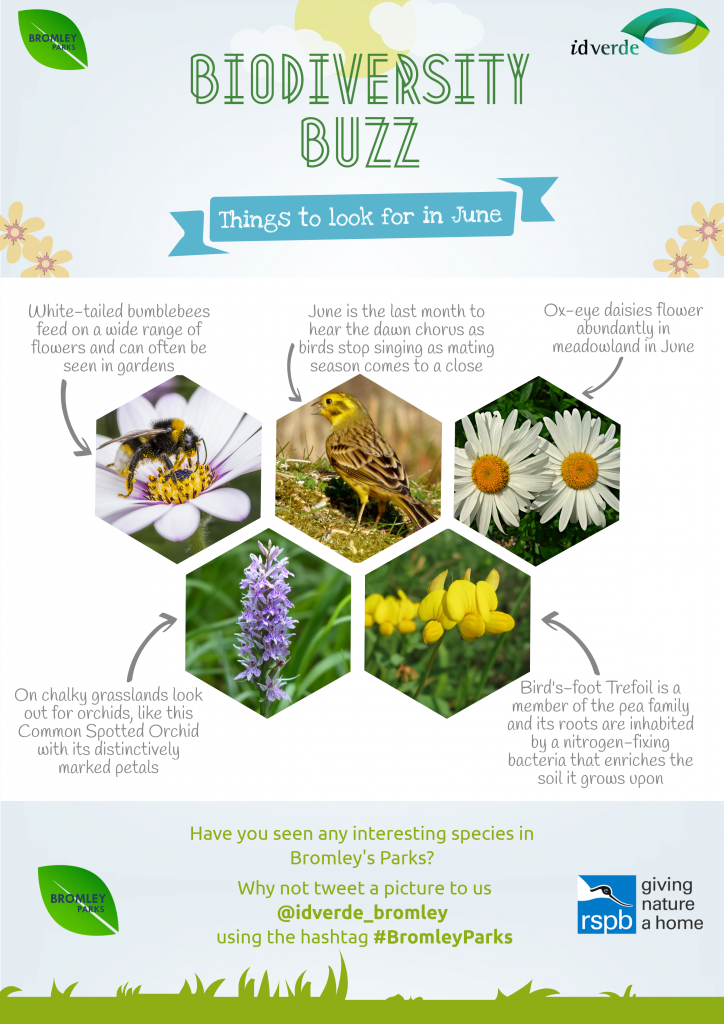
6th May 2018

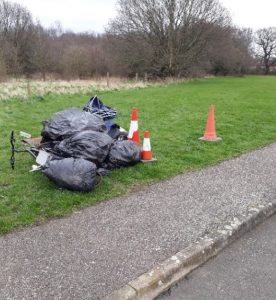
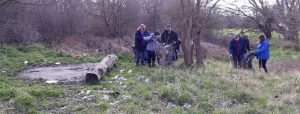
2nd May 2018
With community involvement being a priority of idverde’s commitment, the Bromley department decided to host a public litter pick in keeping with Keep Britain Tidy “The Great British Spring Clean” campaign. Parkfield Recreation Ground in Southborough was given a much needed make-over.
The Great British Spring Clean is an annual event aimed at bringing communities together to help clean up the environment on their doorstep. Traditionally held the first weekend March, the ‘Beast from the East’ ensured the clean up was postponed until April.
Parkfield Recreation Ground was chosen as the best candidate for a mass clear up as it currently lacks the much needed support of a volunteer Friends group.
Armed with litter pickers and black sacks, the local residents, community at the Astley Day Centre, Uppercutz boxing club and local historian Jennie Randall teamed up with idverde and their work experience student from the London Wildlife Trust.
Together the team cleared a total of eighteen sacks of litter and some larger fly-tipped items, including one very rusted bicycle and an old boiler.
A huge impact was made that day on restoring the park to glory, for the benefit of the environment and the community alike.
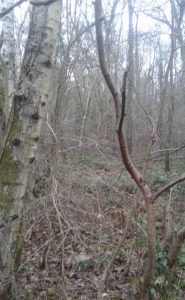
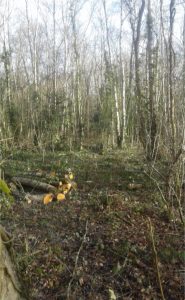
13th April 2018
Woodland has been managed by humans for thousands of years and the wildlife that lives there has evolved to live in this habitat. In fact, until the Industrial Revolution woodland was the home of much heavy industry in this country.
Why manage woodland?
Since the need for timber and woodland products has almost died out many of the woodlands in the UK have been neglected and ancient management practices have died out. This has had a dramatic effect on their plants and animals as many species cannot live without this management. As well as this, many habitats such as lowland heath and chalk downland have themselves become less important and lack of traditional management has resulted in them becoming woodland, again a habitat that needs management to maximise its potential for biodiversity.
Trees within a woodland, if they are allowed to grow too close together, compete for light and grow to be very thin and tall and there are inevitably issues with health and safety and so for the longer term health of the woodland, it is essential that selected trees are removed so that those that are left have plenty of room to grow into.
Woodland plants depend on light to exist and in fact the spring time, before the canopy closes in when new leaves grow is the time when plants such as bluebell and wood anemones are in flower and added light that results from woodland thinning often results in stunning early displays, which would be lost without management.
Timing of woodland work—The best time for large scale woodland work in the winter time. It is this time of year when woodland species, including trees are dormant. Other species such as dormouse and other mammals are deep in hibernation and the impact on them is minimised.
Work in our woodland is meticulously planned, following actions agreed in management plans that reflect the long term nature of woodland planning. ‘Tree time’ is very different to our time and often we are planning work, the results of which we will never see but will benefit the people and wildlife of the future.
The management and monitoring of Bromley’s populations is an important element of the Bromley Biodiversity Action Plan being delivered by idverde in partnership with the RSPB.
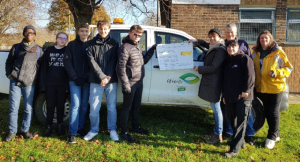
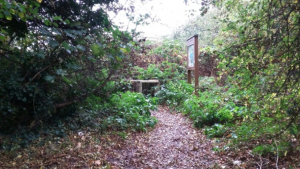

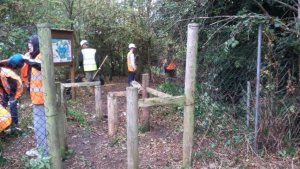
6th April 2018
idverde partnered up with students from the Princes Trust based in Orpington and Bromley colleges for 2 weeks to not only campaign against the litter left in parks but also to raise money for the local Friends group.
Having spoken to park users and members of the local Friends group the students from the nearby Bromley college campus was highlighted as the biggest culprits for litter, antisocial behaviour and damage to the park and its woodlands.
Having worked in other projects with students from The Princes Trust, Darren Russell (Community Team Leader) organised a meeting with idverde and the Princes Trust organisers to introduce a potential project in which the students would play a vital role in not only improving the woodlands for all park users to enjoy but by doing so help to develop further their own social skills working in a public environment, as well as going some way to change the negative public perspective of students. One of the woodland entrances was very overgrown, trapping litter and making the entrance very dark and secluded.
The students cut back all the encroaching vegetation, removed 3 bags of litter that had been trapped in all the bramble and created a more friendlier entrance for park users
Carl from Gillingham has benefitted immensely from the project. He says: “This project makes me feel better about myself and that I am giving something back to the community. Already, people walking their dogs through the woods have been praising us for our work and that makes a difference. I love working outdoors and taking part in such a healthy activity like this.
Local resident and park-user Sue walks her dogs in Elmfield Woods each day. She is excited by the prospect of having the area cleaned up and made into a ‘must-go-zone’ for her and her dogs Molly and Holly. “It’s wonderful,” she says, “the students are doing a fab job and it’s starting to look great already. Well done to them all.”
Jane (students teacher) said: “The students have really engaged with the project and have been itching to get started. Just this morning, they have already cleared a huge area and we are way ahead of schedule. Local users of the park will be delighted by the progress we have made.”
At college the students designed anti litter posters to put up in the park as well as the college and conducted a cake sale to raise money for the Friends of Norman Park to buy litter picks and tools for their planned workdays
The students handing over a cheque for £215 to the Friends of Norman Park.
Jo Hone (Chair of Friends of Norman Park) was delighted and very impressed with the work the students had done.’ its amazing what these students have achieved and we thank them very much for the money that they have raised for our group.’ Sue Holland (Senior Community Manager).
Community engagement and advocacy for biodiversity is an important element of the Bromley Biodiversity Action Plan being delivered by idverde in partnership with the RSPB.
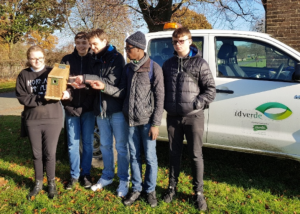
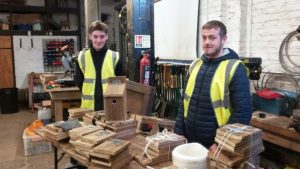
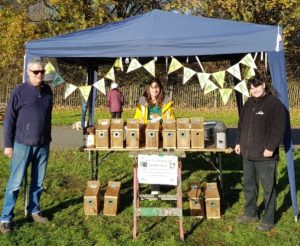
21st March 2018
idverde partnered up with students from the London South East Colleges (LSEC) based in Orpington and Bromley for 4 weeks to provide work experience for 2 students in the field of conservation and construction. As well as conservation work in Elmfield woods two students, Jamie Eason and Franky Snelgrove worked for one day a week at High Elms Country Park in the workshop measuring up and cutting wood to make bird box packs for Elmfield Woods.
The students completed 20 bird box packs under the supervision and guidance of Kevin Brown the Countryside Grounds Maintenance Operative who worked closely with the students showing them how to make the packs. They also constructed a notice board for Elmfield woods, in which they will also install it in the woods so that the Friends of Norman Park can display park information and Friends workday posters, as well as interesting biodiversity news.
Once the bird box packs were completed idverde and the Friends of Norman Park organised a Friends workday and invited park users to help put the bird boxes together and learn about the birds in the park.
Last task was to put the boxes up around the woods and map their locations so that the Friends would be able to monitor the boxes in the spring and hopefully collect bird records for the Bromley Biodiversity sub species group.
Jo Hone—Chair of the Friends of Norman Park was very grateful for the help from the students and is looking forward to setting up a bird monitoring programme for the Friends to participate in the year.
Monitoring of Bromley’s populations is an important element of the Bromley Biodiversity Action Plan being delivered by idverde in partnership with the RSPB.
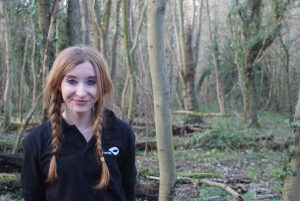
February 21st 2018
idverde Bromley are delighted to welcome the newest addition to their Countryside Team, Angela Wood. Angela has joined us from the RSPB and is stepping in to the role of Conservation & Community Team Leader working alongside our existing team of Community Manager’s and Team Leaders.
Angela’s previous roles as Assistant Warden at RSPB Dungeness as well as previously working at RSPB Rainham Marshes provides her with an excellent skill set and range of experience in habitat management, species surveying and volunteer management on busy visitor and community focussed reserves. “Having grown up in Bromley, where my first connections with nature were ignited, it is good to be back to my roots in a place very close to my heart. With my love of natural history, in particular wildflowers, bumblebees and birds, I hope to bring my experience and passion to the team at idverde and the London Borough of Bromley.”
Conservation & Education Development Manager, John Pemberton added “It is always exciting to welcome a new addition to the team. Angela will be getting to know our sites and fantastic community stakeholders and volunteers before taking over the responsibility for overseeing Darrick & Newstead Woods as well as a number of recreation grounds. Her recruitment as an additional member of the team further highlights idverdes commitment to the biodiversity and positive management of our countryside spaces.”
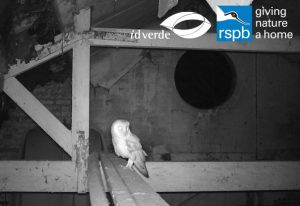
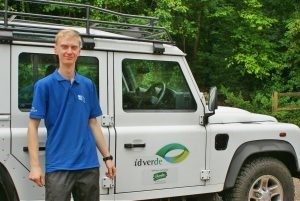
February 8th 2018
Our feathered friends have provided us with some exciting records so far in 2018. First of all we had a very exciting record during our environmental education session for young birdwatchers at BEECHE (High Elms Country Park) when a marsh tit was spotted on our bird feeders. Dispersed amongst a small flock of coal and great tits it was an easy bird to miss but has been seen on a number of occasions since.
The marsh tit is a red listed species and globally threatened, suffering significant declines over the past 25 years and is a bird which is rarely seen in Bromley anymore. idverde’s work with the RSPB as part our partnership aim to carry out work to improve the biodiversity of our parks and greenspaces so that species such as this are not lost.
The second record which we made in recent weeks was Bromley’s first official record of barn owl. This iconic species has been present in Bromley historically but no formal records exist with the Barn Owl Trust, until now. The confirmation took some detective work. After discovering owl pellets (regurgitated pellets containing prey remnants) which suggested barn owl was the culprit, RSPB Biodiversity advisor, Steven Lofting set camera traps up to try and snap the bird in question. Steven said “it is not only fantastic that we have this species back in Bromley but also that we are able to utilise technology like camera traps to do so much hard work for us”. The barn owl which appears to be male based upon the light coloured chest is possibly passing through but unlike tawny owls barn owls are not strictly territorial so if habitat is suitable and food is plentiful it is very possible that a potential mate may be found.
February 1st 2018
Local volunteer and professional ecological consultant Jamie Fletcher carried out surveys’ assessing the diversity of birds in Lily’s Wood and Cuckoo Wood. These London Borough of Bromley owned sites are managed by idverde. Commitment such as Jamie Fletcher’s is critical in conservation at both a local and national level and play an important role in achieving a biodiverse Bromley.
Community engagement and volunteering are key aspects of outcomes of the Bromley Biodiversity Action Plan. Via partnership’s such as this and our partnership with the RSPB idverde are working closely with a wide range of stakeholders to improve the biodiversity value of sites across the borough through community engagement, education and habitat management.
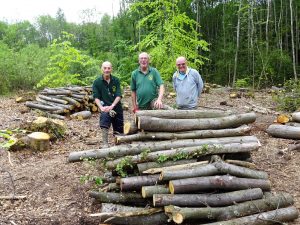
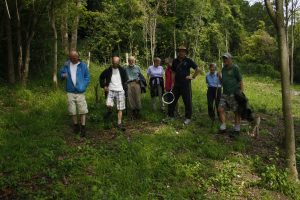
January 23rd 2018
As traditional as the Christmas mince pie is the New Year fitness regime. However health is more than just physical exertion and classes. The health and well being effects of nature are an increasingly important and well researched aspect of urban living and health in general. As a society we are spending less time outdoors and even less time outdoors in natural settings. In 2016 Natural England published a report documenting the benefits to mental health of spending time in nature and the RSPB has published a report on Wellbeing Through Wildlife. Our country parks are invaluable sites for nature in urban environments and as such are also excellent sites for engaging in nature. Activities such as running, walking, dog walking can all improve physical health with the added benefits of being outdoors potentially having positive effects on stress, anxiety, social inclusion and mindfulness. So this New Year why not make a resolution to spend more time in nature and visit your local park? Whether for a sociable stroll, to feel the burn on outdoor gym equipment or take part in voluntary activities to improve the habitat for biodiversity our parks are here for everyone.
Bromley Countryside Volunteer (BCV) Tony Allen identifies the health and wider benefits he gains from volunteering.
“For me the benefits of being a member of the BCV is the enjoyment of working outdoors. Our group is not affiliated to any one particular site within the borough, therefore we have an annual work program that is very varied. As someone who is keen on exercise I do enjoy the physical aspects of our work and like to think that we are giving nature a helping hand. Judging how our regular sites have responded to our efforts, this would seem to be the case. A number of our group members have an extensive knowledge of various aspects flora and fauna which they are always keen to pass on. ”
Community engagement and volunteering are key aspects of outcomes of the Bromley Biodiversity Action Plan. Via partnership’s such as this and our partnership with the RSPB idverde are working closely with a wide range of stakeholders to improve the biodiversity value of sites across the borough through community engagement, education and habitat management.
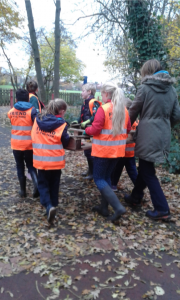
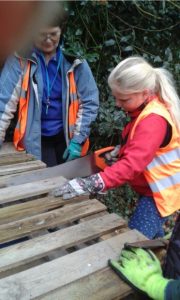
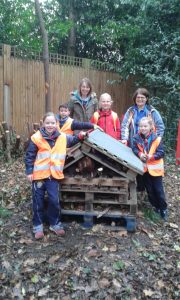
January 2nd 2018
Chislehurst 5th cubs have been working alongside The Friends of Chislehurst and Walden Recreation ground and idverde to reclaim a shaded garden next to the children’s playground.
The Chislehurst 5th Cubs rolled up their sleeves to build a bug hotel, plant primroses and bulbs. The Cubs will be making signage and branding logs to advertise the good work.
idverde cleared the site and the Cubs learned how to measure and map the area, survey trees and think about how they can improve the site for nature.
Plans have been drawn up to include homes for bugs and amphibians, to plant primroses along the bank of the stream, plant the main bed with shade loving plants and to include a pebble pond with pebbles that have been painted by as many children as possible as a mosaic to represent a small pond creating a wildlife garden which will benefit both the cubs and local wildlife. Promoting our local nature and engaging communities with nature in Bromley is a key element of the Bromley Biodiversity Action Plan as supported by idverde’s partnership with the RSPB. Volunteers are a critical to achieving the objectives and it goes to show that volunteers can come in all shapes and sizes (and ages!). If you would like to get involved with supporting you local park visit our Friends page.
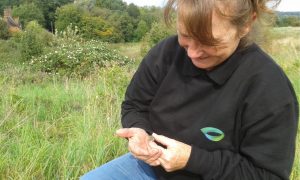
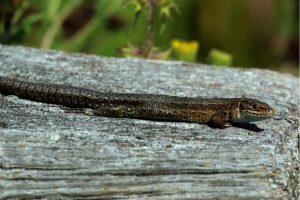
December 7th 2017
Earlier this year idverde were approached for help in the translocation of viviparous lizards. A population of the protected species were present at a site being used for property development. St. Pauls Cray was identified as an area of suitable habitat where the species was already present. The process of translocation to St. Pauls Cray Park was a complicated one, requiring input from multiple stakeholders and licenced ecologists. In September the translocation went ahead. idverde are now working with local volunteers to develop the habitat further to support the new residents to ensure that the habitat is managed in a way which will promote the growth of the population and safeguard it which is an important requirement of Bromley Biodiversity Action Plan as supported by idverde’s partnership with the RSPB. If you would like to get involved with supporting you local park visit our Friends page. We couldn’t do this fantastic work for the nature on our doorstep without the exceptional commitment and work of the volunteers who dedicate themselves to our parks.
idverde community Managers Andrew Harby, Caroll Long and the Friends of Cray Valley, worked with ecologist Brett Lewis, bringing the reptiles over to the park each afternoon for a few weeks, An area of the country park has been identified as an area to improve for reptile habitat and idverde has been improving the edge of paths by scalloping and stepping the undergrowth. A new mowing regime is in place to create an area of all round habitat and a small amount of funding has been donated to help train the Friends groups and improve the area.
Brett assured the group that the habitat would already have been supporting a colony of lizards and slowworms and the new arrivals will feel at home.

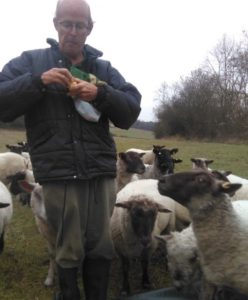
November 3rd 2017
Higher Level Stewardship (HLS) is an agri-environment scheme which provides funding from Natural England for the management of priority land for environmental benefits. In suitable areas the agreements can specify conservation grazing as a management tool to benefit the habitat and biodiversity as is the case on some London Borough of Bromley land being managed to achieve the outcomes of the Bromley Biodiversity Action Plan.
The reasons for this are many and varied. Firstly sheep are much more sensitive than machines and mowers, which cause damage to small wildlife such as insects and small mammals. Secondly mowers cut the grass and flowers to a uniform height and sheep tend to only graze the more tasty herbs and leave a sward of varied height, which again benefits insects, some of which need special conditions to survive.
Lastly, driving large tractors and mowers across the sward causes compaction, which damages many sensitive herb species and sheep are a much lighter alternative.
For these reasons, every October, sheep are let loose in two locations at High Elms Country Park, to spend a few weeks working their magic. The sheep are supplied by the Downlands Countryside Management Partnership, an organisation that specialises in the grazing by sheep, cattle, horses and goats of chalk grassland. Via partnership’s such as this and our partnership with the RSPB idverde are working closely with a wide range of stakeholders to improve the biodiversity value of sites across the borough.
Oh yes, the dung that the sheep produce also benefits many insects such as beetles and flies. Tractors only produce pollution!
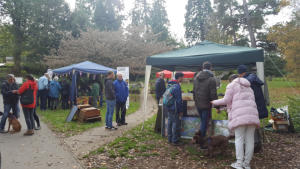
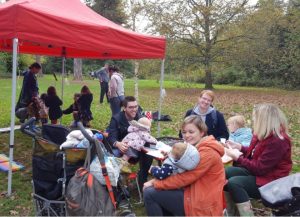
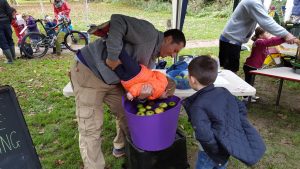
October 30th 2017
With the support of idverde the Friends of High Elms have teamed up with the Orchard Project, a national charity dedicated to the preservation, creation and celebration of community orchards across the country.
Together we are planning the restoration and maintenance of our two orchards with training provided by the orchard project, as well as community events aimed at engaging the local community.
In October 2017 to kick start this partnership an Apple Day was held at High Elms Country Park. Once an annual event here this will hopefully be the first of many to come. Apple days are a nationwide celebration of orchards that take place in the month of October to prevent the loss of orchards not just as community focal points but for their importance to wildlife and the wider landscape.
What was on offer:
-Apple pressing demonstrations by the Orchard Project and free tasting (delicious!).
-Friends stall
-Information about orchards and the friends group.
-Wooden crafts made on a lathe by a member of the friends group.
-Cake table.
-Story telling and colouring with the BEECHE staff.
-Free honey tasting and stall by the Orpington Apiary Club.
-Music—traditional folk by the Orpington Folk Club.
-Apple games—Apple bobbing and a coconut shy.
The results:
-Over 100 people attended from the local community to engage with the activities and learn about the importance of orchards.
-A successful fundraiser for the friends.
-Increase footfall and sales for the BEECHE Education Centre.
-Lots of fun!
The future:
-A bigger better Apple day next year following on from the success of this one.
-Expanding the range of public events with the Friends groups—next up “ winter wassail” to banish the evil spirits and usher in the good.
-Continued work with the Orchard Project for community training days and events for the restoration of the High Elms Orchards.

